The British Royal Family Has Blood Ties with Osijek, Đakovo Bids Farewell
September 9, 2022 – The rich history of the British royal family can be divided into two stages. The one before Queen Elizabeth II and the one after her enthronement. The ties that she spread all over the world and her own country will be remembered for a long time, so it's no wonder that Britain is mourning her passing. SiB took a moment to remember what binds the queen and her family to Osijek and Slavonia.
As SiB writes, the queen's only visit to the former Yugoslavia was connected to Slavonia, more specifically Đakovo, where the queen visited the famous Lipizzan Stud Farm. The State Stud Farm Đakovo reminisced and expressed its condolences to the royal family for the death of their dear guest, whose visit was written down in considerable letters in the history of the Farm.
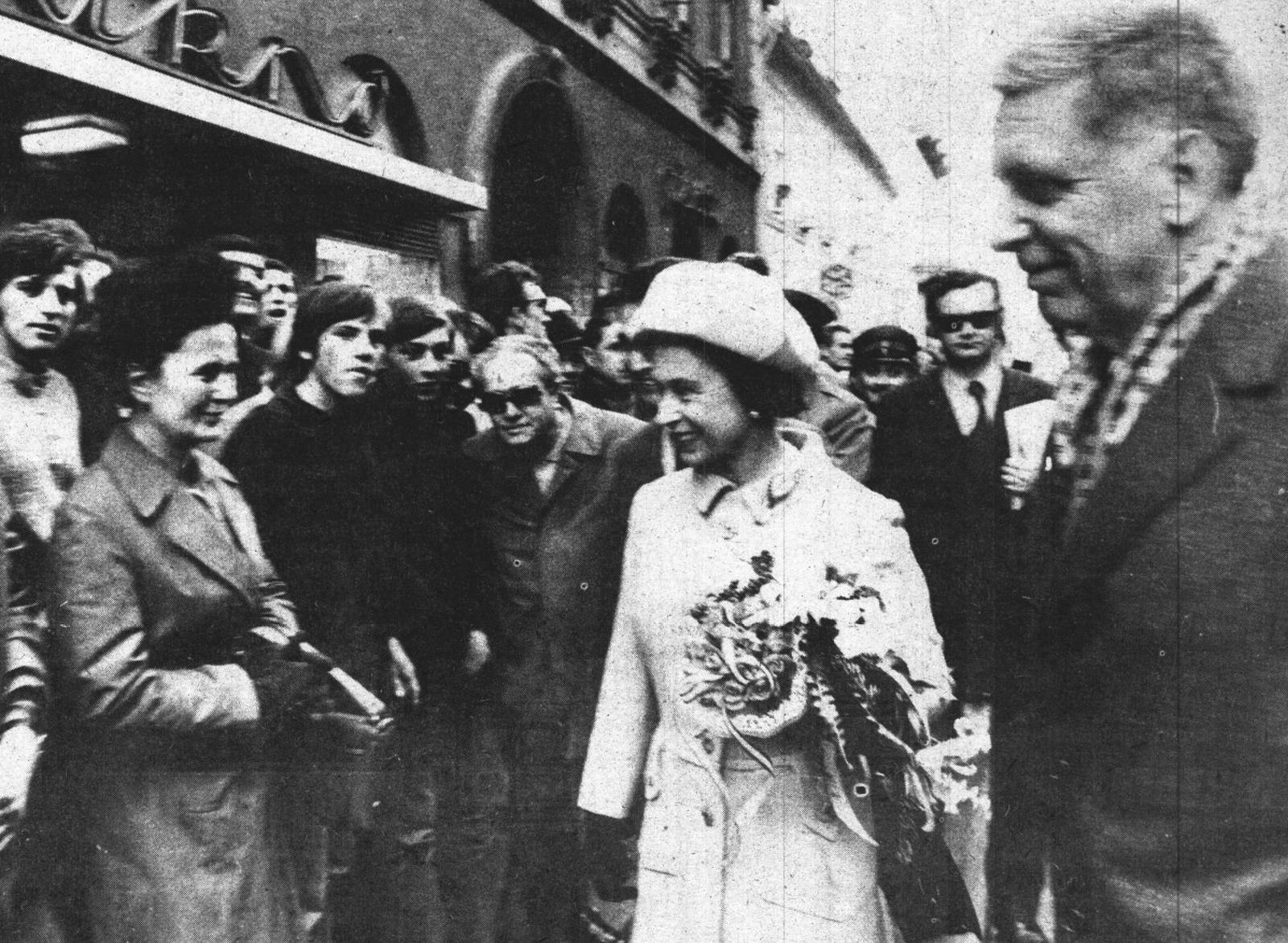
Zagreb, 1972. Bozidar Kelemenic / Pixsell
However, what few people know is the royal family's blood connection with Osijek. The distant great-grandfather, of until yesterday Prince Charles, and soon King Charles III, and the great-grandfather of Queen Elizabeth II, was Franz von Teck, who was born and spent part of his life in Osijek.
Charles certainly knew all this when he visited Osijek in March 2016 together with his wife Camilla, Duchess of Cornwall. They then met with President Kolinda Grabar-Kitarović, and as a gift from Osijek they brought a signed NK Osijek jersey, and Charles became an honorary member of the NK Osijek fan club.
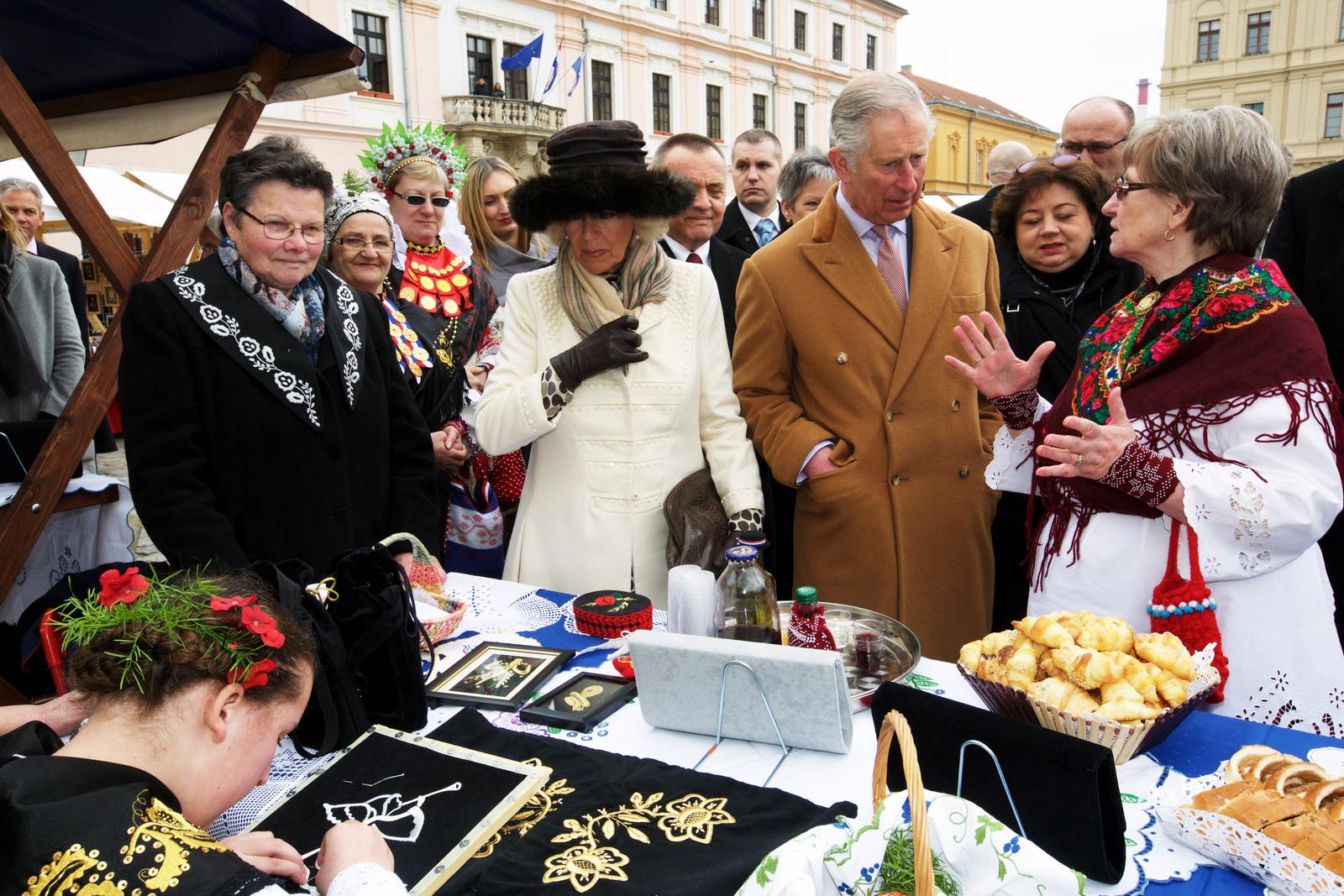
Vlado Kos / Pixsell
After Osijek, they visited Baranja and Đakovo, where only the Duchess went to visit the Stud Farm.
In Baranja, the king also enjoyed the local specialty, fish stew. The royal family remembered their trip at the end of that same year with "the most festive Christmas card ever". They wished a happy Christmas with a photo from Osijek, and on it, in addition to the duchess and then the prince, there were members of HKUD Osijek 1862 in festive costumes.
The ties of the royal family with our region are so very deep, and it is up to Osijek and Slavonia to nurture and deepen them in the future.
For more, make sure to check out our dedicated Lifestyle section.
Two Thousand People Participate in Đakovo Folklore Festival Procession
ZAGREB, 3 July 2022 - The main event of the 56th Đakovački Vezovi traditional folklore festival took place in the eastern city of Đakovo on Sunday as 2,000 participants, including 43 folklore groups from Croatia and abroad, walked down the city centre.
Ukraine is the partner country of this year's festival, which also showed the folklore of Bulgaria and Slovenia. Also present were Croatian folklore societies from Kansas City, Bački Monoštor in Serbia and Tomislavgrad in Bosnia and Herzegovina.
Among those watching the 90-minute procession were Bulgarian Ambassador Genka Georieva and the Croatian parliament speaker's envoy, MP Goran Ivanović.
After the procession, Archbishop Hranić celebrated Mass at St. Peter's Cathedral.
The festival ends tonight with the election of the most beautiful folk costumes.
For more, check out our lifestyle section.
56th Đakovački Vezovi Folklore Festival Opens with Ukraine as Partner Country
ZAGREB, 2 July 2022 - The 56th Đakovački vezovi folklore festival opened in Đakovo on Friday and this year's partner is Ukraine.
Speaking at the opening ceremony, Prime Minister Andrej Plenković said this festival in the heart of the Slavonia region showed how rich Croatian culture, tradition, heritage and folklore were.
He said that "in this difficult moment for Ukraine, Croatia, and notably Slavonia, know and understand what sacrifice is, what it means to be attacked, and what solidarity and support for friends are when they need it most."
That's why these past few months Croatia has taken in Ukrainian refugees and extended strong political, humanitarian and financial support to Ukraine, a victim of Russian aggression, Plenković said.
We say that on the ninth anniversary of Croatia's EU membership and just a couple of days after Ukraine won EU membership candidate status, with strong, firm and big support from Croatia and the Croatian people, he added.
Parliament Speaker Gordan Jandroković said many MPs from different political groups gathered at the opening of Đakovački vezovi and that this showed how much they cared about nurturing Croatian tradition, identity and roots.
He said that "in such challenging times, firm roots are extremely important." Our firm roots come from our tradition, history, faith, identity and culture, and Đakovački vezovi is a festival celebrating everything Croatia has and what the Croatian people has built over the centuries, he added.
Đakovo Mayor Marin Mandarić said the festival was a top cultural and tourist event in Croatia.
Ambassador Vasily Kyrylych extended his thanks for the invitation that Ukraine be this year's partner country and for the strong support to Ukraine and the reception of its refugees. He also thanked the Croatian parliament for being the first in Europe to adopt a resolution on the situation in Ukraine and its support to his country.
The main event of Đakovački vezovi is on Sunday, when 50 folklore groups with 2,000 participants from Croatia and abroad will take part in a procession through the city centre. The festival includes exhibitions, workshops, concerts, cuisine and children's programmes.
For more on travel in Croatia, follow TCN's dedicated page.
Traditional Festivities in Slavonia - Unmissable Events
7th of April 2022 - There are a lot of festivities you can visit in Slavonia - from beer and food festivals that became really popular in recent years, to modernized cultural manifestations which teach us something new. However, traditional festivities in Slavonia which are held for more than half a century, are still an irreplaceable staple of this region.
When reviewing the list of festivities in Croatia, a tourist or even a Croatian citizen, is shocked by the variety and content Croatia organizes every year for their visitors. Urban, cultural, and gourmand festivals are in forefront of most tours and offers, especially with summer coming soon and since Croatia became a really popular destination among tourists, they also got more interested in the tradition and cultural heritage of the region they visit. For instance, Dubrovnik, which is a jewel of the Adriatic coast, not only attracts visitors with its gourmand offers or beautiful historic sites like Tvrđava, they also have the Dubrovnik Summer Festival (Dubrovačke ljetne igre) which brings visitors closer to tradition and the way native people of Dubrovnik lived centuries ago. This event brings Dubrovnik back to the golden age of renaissance and baroque, the living spirit of drama and music, and many more, which were bestowed upon Croatian cultural and scholarly history. That’s why Dubrovnik is so good at tourist offers, they bring everything to everyone.
However, with different tourists comes different tastes and recent years showed an increase in interest in Eastern Croatia, more precisely, Slavonia and Baranja, which are labeled as more “rural, folk” regions. Slavonians and Baranians recognized the potential these regions have and started adapting to tourists' wishes and needs. Yes, they devised and organized multiple new festivals that will be held for many years to come but they realized their traditional festivals, which are really popular with lovers of everything related to tradition and locals, need more exposure.
Đakovački vezovi - Đakovo
Today, Đakovački vezovi is a well-known and affirmed manifestation of original folklore. The first manifestation occurred in July 1967, as part of then the International Year of Tourism and from the beginning, the event was a great success with people from Slavonia and beyond. The main event kept its original date and it’s held every year in July. Contents of the festival include original folklore from Slavonia, Baranja, Western Srijem, and other parts of Croatia with accompanying events such as the opening of various exhibitions, equestrian events, and other cultural and tourist events. The entire city participates in the event and in 2005, it received the International Tourism Charter (European Federation of Tourist Journalists based in Rome) Merits for Tourism. Thousands of folk costumes pulled from the chest of oblivion, thousands of participants from Slavonia, Baranja, the whole of Croatia, even Europe, and the world, bring us songs, dances, and customs of their homeland for decades in Đakovo. If you’re a gourmet, you’re settled. Hundreds of different dishes are served and ready for degustation. Wine lover? Multiple winemakers with their best wines are ready to show off their products which are a reflection of the beautiful, rich region of Slavonia. Artists, folk, history lovers, and even animal lovers can come and have the time of their lives which makes it one of the largest and most popular traditional festivities in Slavonia. For more details, check out their official website.
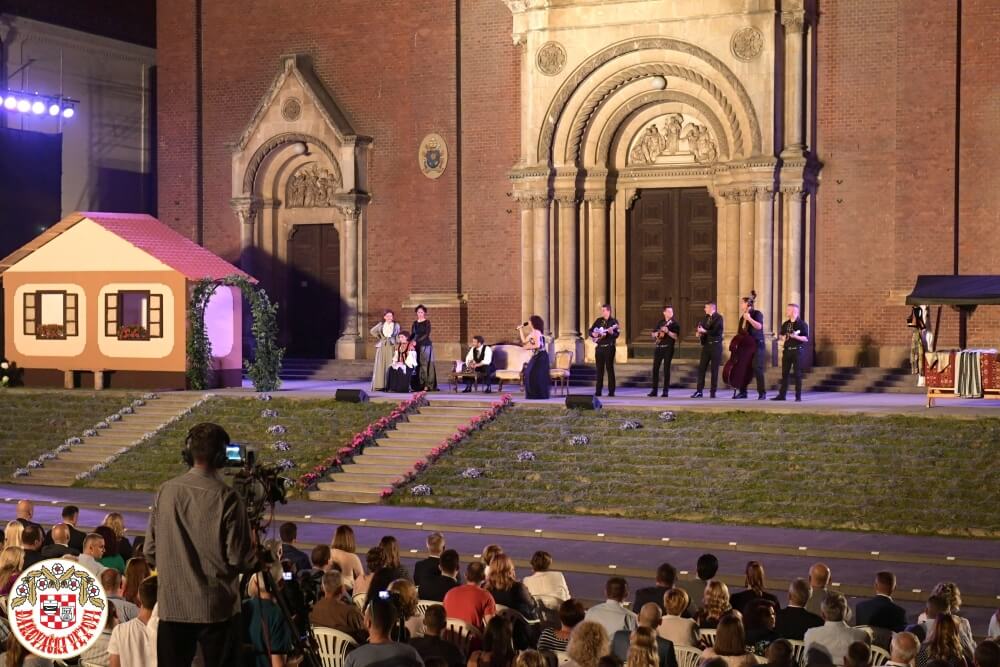
The opening of "Đakovački vezovi" in 2019 (photo credit: Photo Gallery - djakovacki-vezovi.hr)
Vinkovačke jeseni (Vinkovci Autumns) - Vinkovci
Definitely, the largest cultural event in the region, arguably in Croatia and some would say, in this part of Europe. The First Vinkovačke jeseni was organized in September 1966 and soon became one of the most famous festivals of its kind in all of Croatia. The foreground of the manifestation is the care of traditional folk dances, costumes, and customs in order to preserve various values of folk and traditional life of Slavonia. What’s really interesting is the fact that the manifestation is organized in September because of autumn - a season that rewards Slavonians for their hard work. After its founding, the festival soon began to connect all lovers of cultural heritage, not just Slavonia, but all the regions in Croatia. So every year hundreds of Folklore Societies from Croatia, Serbia, Bosnia and Herzegovina, Slovenia, and many more come to Vinkovci to display their culture to visitors. However, they didn’t stop there. Organizers recognized the tourist potential of their event and upgraded it for modern times, so apart from the main event which signifies a closure of Vinkovačke jeseni, the whole week before the opening is dedicated to its visitors! For instance, the opening of the event comes with a big performance by the local theatre with other guests from all over Croatia and in the evening the concerts of the biggest Croatian music stars begin, every evening of the week! Personally, I watched biggest Croatian performers on Vinkovačke jeseni stage like Dino Dvornik, Severina, Jelena Rozga, Klapa Intrade, Giuliano, Prljavo Kazalište and so many more. It truly is for everyone. Then, when the show of the manifestation ends on the last day of the week with the biggest folklore parade in this part of Europe (nationally televised), with the most popular folk and traditional commentator in Croatia, Branko Uvodić, every visitor feels enriched with Slavonian tradition, cultural heritage, food, art, folklore and more. That’s why Vinkovačke jeseni is one of the biggest traditional festivities in Slavonia and one of the best representatives of Croatian traditional, cultural heritage in this part of Europe. For more details, visit their official page. If you want to read more about Vinkovci, check this TCN article.
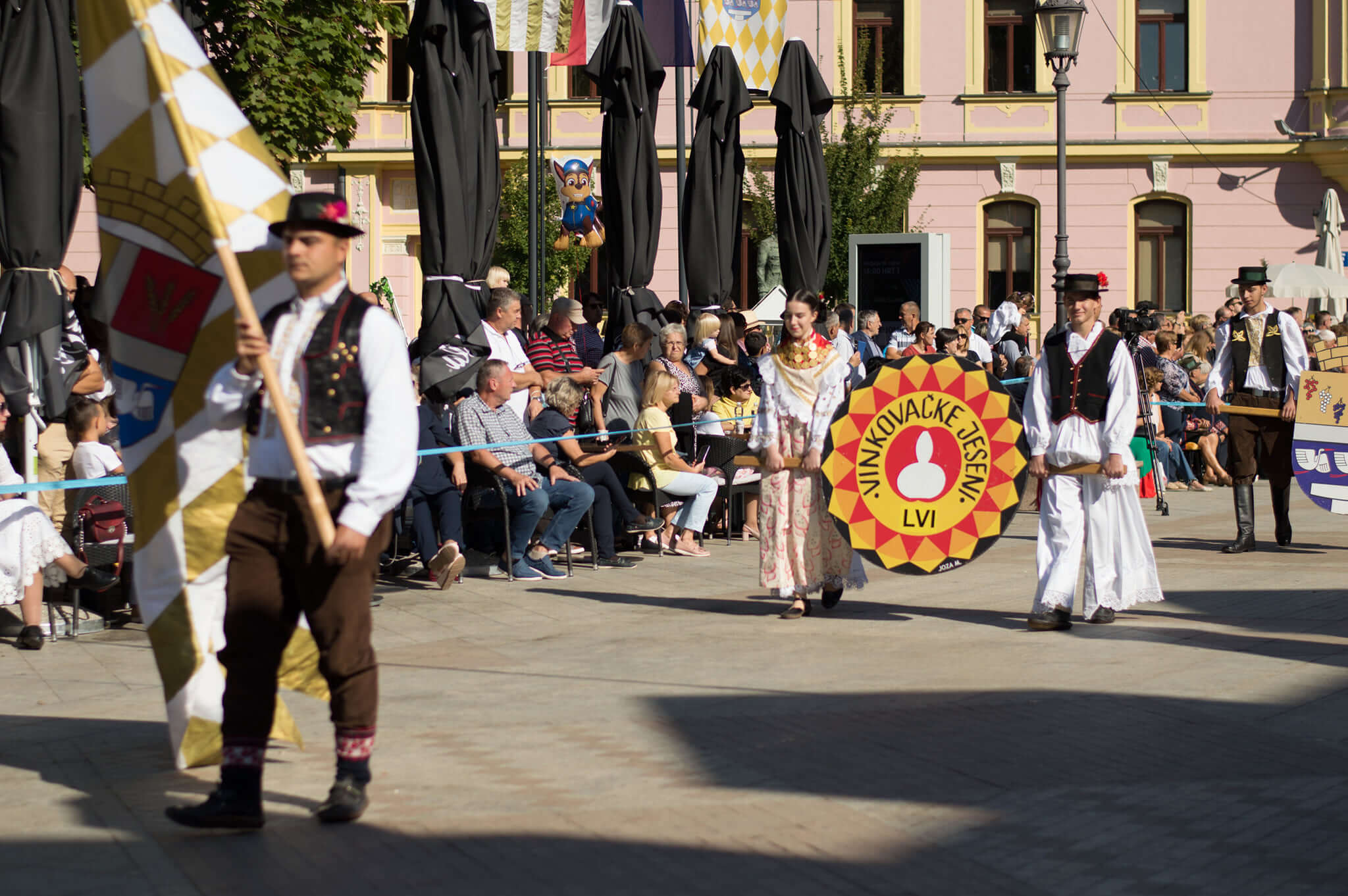
"Vinkovačke jeseni" parade - the main event on the last day (photo credit: Vinkovačke Jeseni - Facebook page)
Aurea Fest - Zlatne žice Slavonije (Golden Wires of Slavonia) - Požega
In the middle of Slavonia lies the city of Požega, located in the hilly parts of the region where none of the roads are straight - a place where hills are dotted with roads. Surrounded by the old hills of Psunj, Papuk, Krndija, Dilj, and Požeška Gora and home of the famous Croatian poet, Dobriša Cesarić, it doesn’t seem odd that this city is the home of one of the biggest traditional, cultural and musical events of folklore, tamburitza but also pop music, which has been held in Požega since 1969, with a break between 1981 and 1990. Zlatne žice Slavonije today is a four-day event with more than 40,000 visitors and more than 100 accredited journalists from several countries. Songs, top-tier wines, gastronomy events, concerts, exhibitions, art colonies, sports competitions, folklore festivals and other events are slowly making Požega and the Golden Valley one of the tourist destinations in Croatia in September. It hosted multiple Croatian musicians (mostly “tamburaši”) like Gazde, Zlatni Dukati, Miroslav Škoro, Slavonske lole and so many more. CDs and cassettes were pretty popular back in the day, which meant that almost every Slavonian household had a copy of musical repertoire from Golden Wires of Slavonia! So, if you visit Slavonia, definitely visit Požega in September - great content, songs, dances, food, and most importantly, people. The main event, the concert, is nationally televised on HRT every year. For more information, visit their official page.
For now, we’re stopping here. There are a lot of traditional festivities in Slavonia but these three events are staples of traditional festivities in Slavonia and the whole of Croatia. From entertainment to food and sports recreation, these manifestations are unmissable events if you want to visit Slavonia. Slavonian spirit cannot be recreated anywhere else, so if you want to relax further after a summer tour of the Adriatic, come to Slavonia, they’re going to welcome you with open arms.
For more, make sure to check out our travel section.
2nd Edition of Craft Beer Festival Taking Place in Đakovo
ZAGREB, 4 Sept, 2021 - The second edition of the Đakovo Craft Beer Festival kicked off in that eastern Croatian city on Friday evening, with nine Croatian craft breweries participating in this three-day event.
Over a score of craft beers, produced in Osijek, Vukovar, Vinkovci, Slavonski Brod, Zabok and were promoted. Also the association of the Dalmatian Brewers' Association presented their craft beers.
For more on lifestyle, follow TCN's dedicated page.
For more about Croatia, CLICK HERE.
Escape to Osijek-Baranja County and its Epic Sights and Flavours
May 14, 2021 – Breathtaking views of the Danube at Erdut and Aljmaš, the bona fide masterpiece of Đakovo cathedral, the unique winemaking traditions of northern Baranja, the wildlife-rich wetlands of Kopački rit and the OPGs of Osijek-Baranja County. There's a whole other world to discover in this epic corner of Slavonia-Baranja.
It seems like the world is speeding up. Everything now is that much more immediate. In this age of Instagram and 'influencers', we quickly scroll past postcard-pretty pictures on our phones. 'Like'. Forgotten, in an instant.
Croatia is a country not without postcard-pretty pictures. But, to snatch attention in this super-fast, vacuous age, all too often we are shown the same images. Heart-shaped islands from above, dolphins at dusk, sunset over the Adriatic and its epic Dinaric Alps. You could be forgiven for thinking that every view in Croatia contains the sea.
 Slavonia © Romulić & Stojčić.
Slavonia © Romulić & Stojčić.
There are very few mountains in the Pannonian basin. And there is no sea. Well, not any more. Instead, these flatlands stretch 600 km from east to west and 500 km from north to south through several countries. They engulf the eastern section of Croatia we know as Slavonia, Baranja and Srijem.
Unsurprisingly, such a vast plain is not without its epic qualities. But, the epic nature of Osijek-Baranja County in Slavonia-Baranja is difficult to capture in a competing image on social media. Its special qualities instead lie in the sounds, the tastes, the tradition, the sights and the people. This is a place that has to be visited to be understood. And, if you do, it's an experience that will far outlast any fleeting photo on Instagram. Here, we take a look at just a small section of the unforgettable offer in Osijek-Baranja.
Imperial horses and the bona fide masterpiece of Đakovo cathedral
State Stud Farm Đakovo
Horse breeding in Đakovo is thought to be even older than 1506 when first written mention of the town's stud farm comes from. An endeavour of regional bishops, it bred horses of Arab stock. But, that changed at the beginning of the 19th Century.
 In the fields, Lipizzaner horses © Silvija Butković.
In the fields, Lipizzaner horses © Silvija Butković.
Lipizzaner horses were the prized breed of the Habsburg monarchy, their genetic line today traced back to eight stallions from the late 18th and early 19th centuries. With the advancement of Napoleon's army across Europe, Lipizzaners were sent further east in order to protect them. This imperial horse has been bred in Đakovo ever since.
Born with black skin and black hair, their hair gradually turns to a characteristic light grey (although, some other colours occur). Traditionally, when the colour change was fully complete, the horses were ready for royal duty.
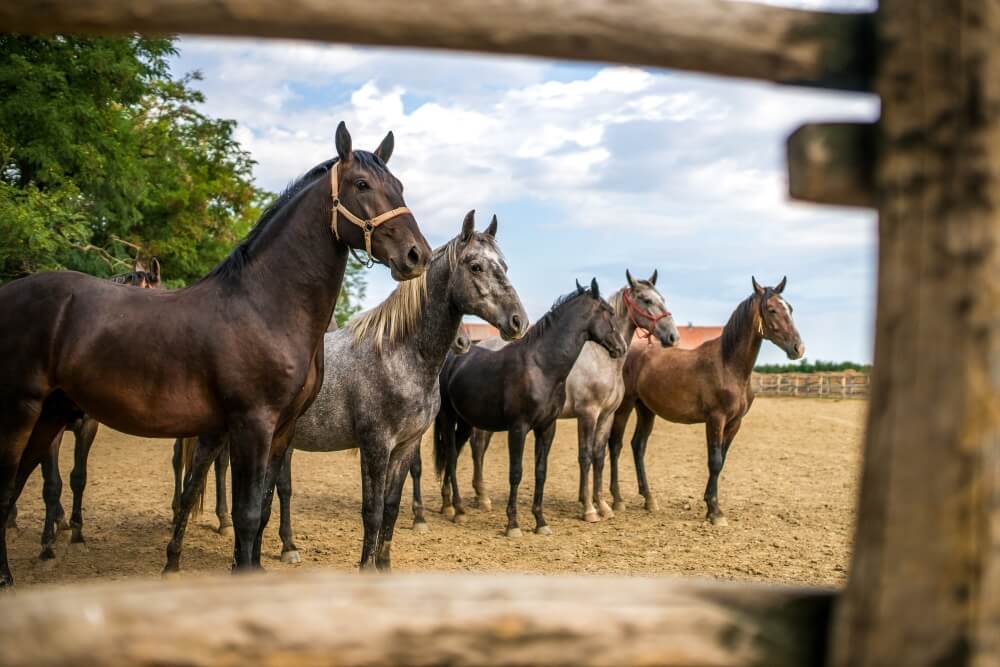 Younger horses on the State Stud Farm in Đakovo © Denis Despot / Tourist Board of Osijek-Baranja County.
Younger horses on the State Stud Farm in Đakovo © Denis Despot / Tourist Board of Osijek-Baranja County.
Today, at the State Stud Farm Đakovo, the Lipizzaners are bred and trained in dressage. The farm contains Croatia's largest indoor riding hall, in which public performances take place. Previous visitors to the farm include several members of the British Royal family. Queen Elizabeth II, Prince Phillip and their daughter Princess Anne came in 1972, while Camilla, Duchess of Cornwall came in 2016.
Đakovo cathedral
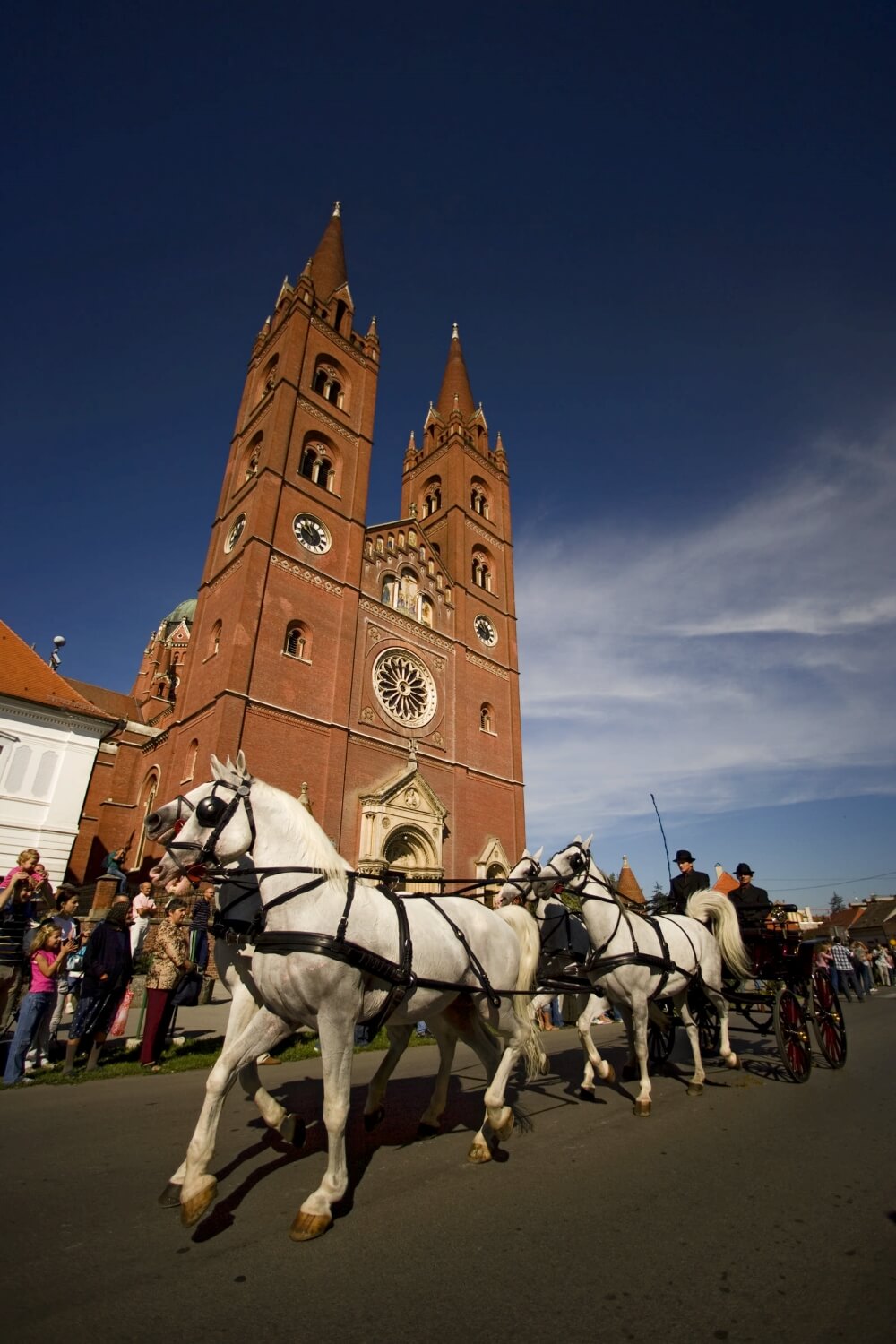 Exterior of Đakovo cathedral © Romulić & Stojčić.
Exterior of Đakovo cathedral © Romulić & Stojčić.
The presence of Bishop Josip Juraj Strossmayer looms large in the history of Croatia. Nowhere does that presence loom larger in a physical manifestation than Đakovo cathedral. By far, it is the largest sacral building in Slavonia, the second-largest in Croatia.
 © Romulić & Stojčić
© Romulić & Stojčić
This part of Slavonia is completely flat. Therefore, you can see the cathedral for miles as you approach Đakovo. Once up closer, its red bricks give it the appearance of a modern building. In fact, Josip Juraj Strossmayer oversaw its construction between 1866-1882. In truth, he'd wanted to build it for much longer, but struggled to get the funds required for his vision. Indeed, the project was so delayed that the artist Strossmayer chose to paint the interior, German Nazarene Johann Friedrich Overbeck, died before he could begin the task. Instead, father and son Alexander Maximilian Seitz and Ludwig Seitz assumed the task.
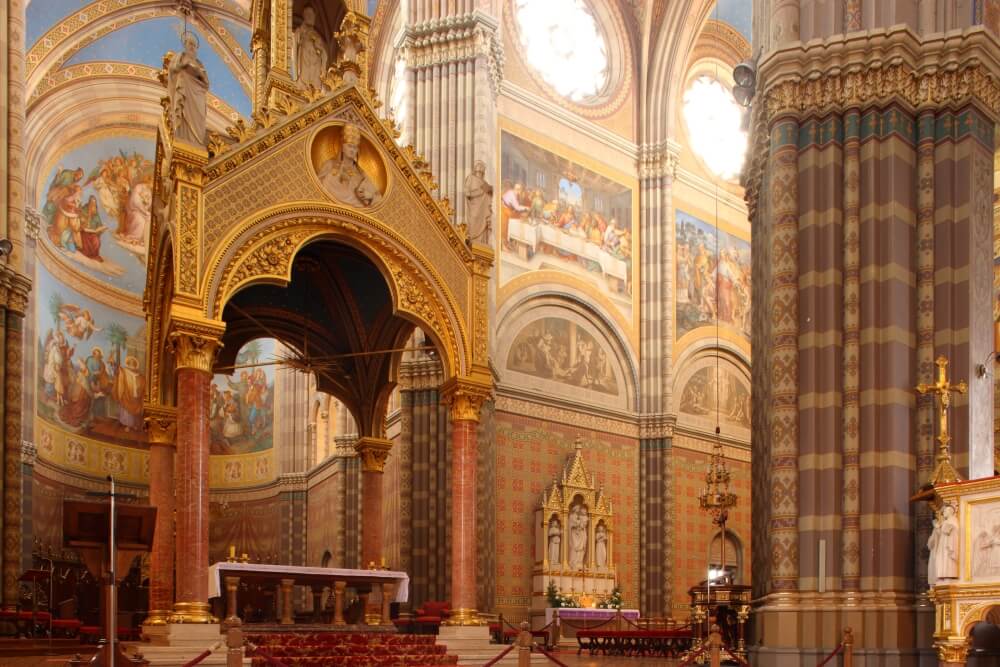 Interior detail in Đakovo cathedral © Romulić & Stojčić
Interior detail in Đakovo cathedral © Romulić & Stojčić
The building's construction actually only took four years, but it took a full 19 years to complete decorations inside. It's easy to see why. The interior of Đakovo cathedral is a bona fide masterpiece. Ornate frescos depicting scenes from the Old Testament and New Testament radiate from above. Regardless of your faith, it is a breathtaking experience to walk within.
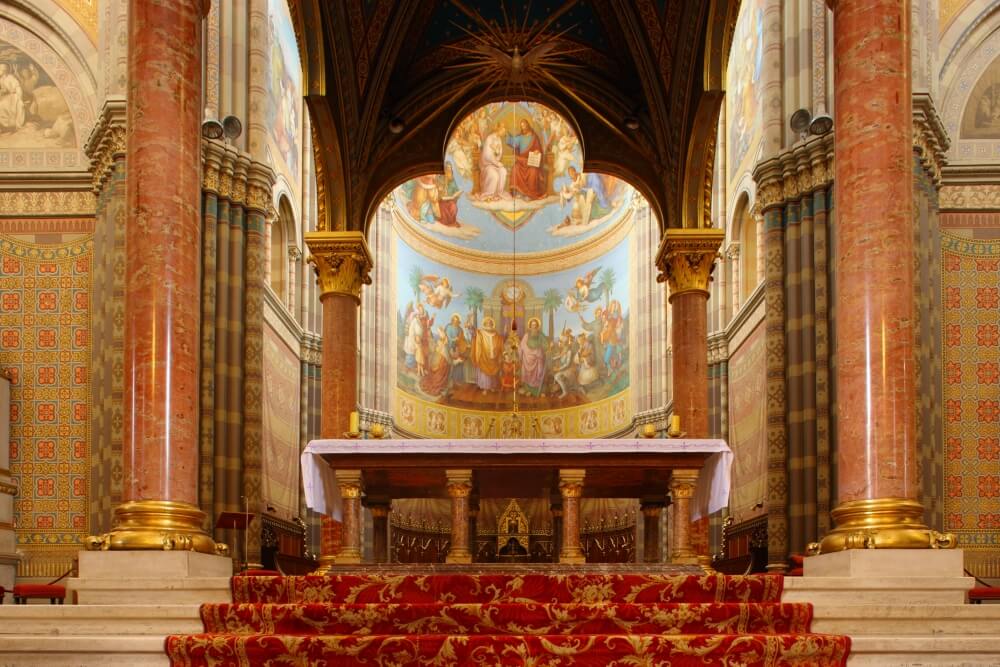 © Romulić & Stojčić
© Romulić & Stojčić
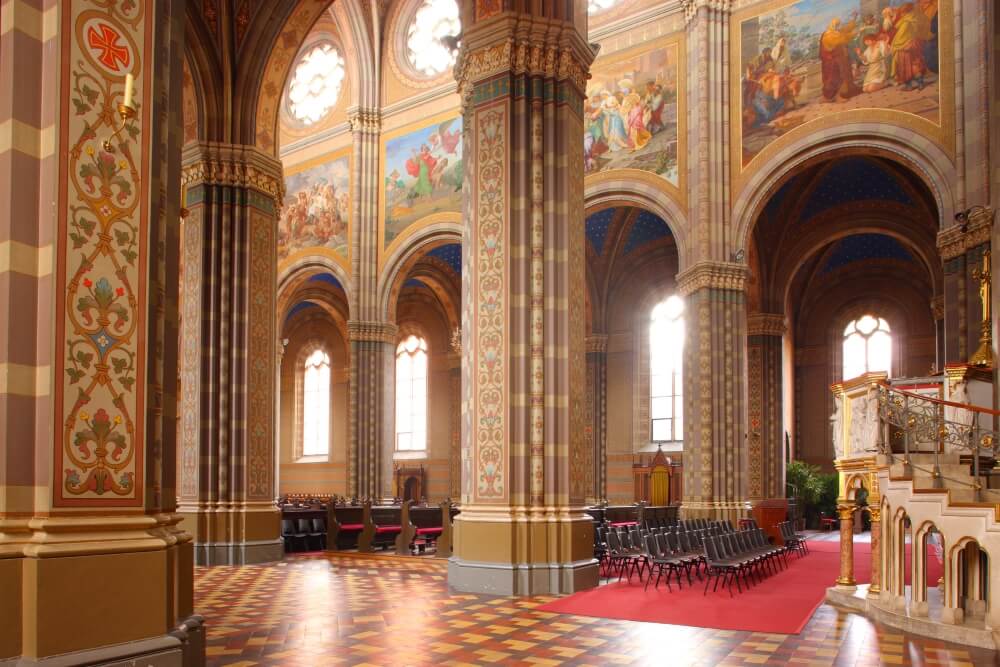 © Romulić & Stojčić
© Romulić & Stojčić
13 of the frescoes are by Alexander, 20 are by Ludwig. The detail of their work captivates the eye. The Neo-Romanesque architectural flourishes design inside are similarly grandiose. Visiting while on a journey to Bulgaria, future Pope John XXIII proclaimed it to be the most beautiful church between Venice and Constantinople.
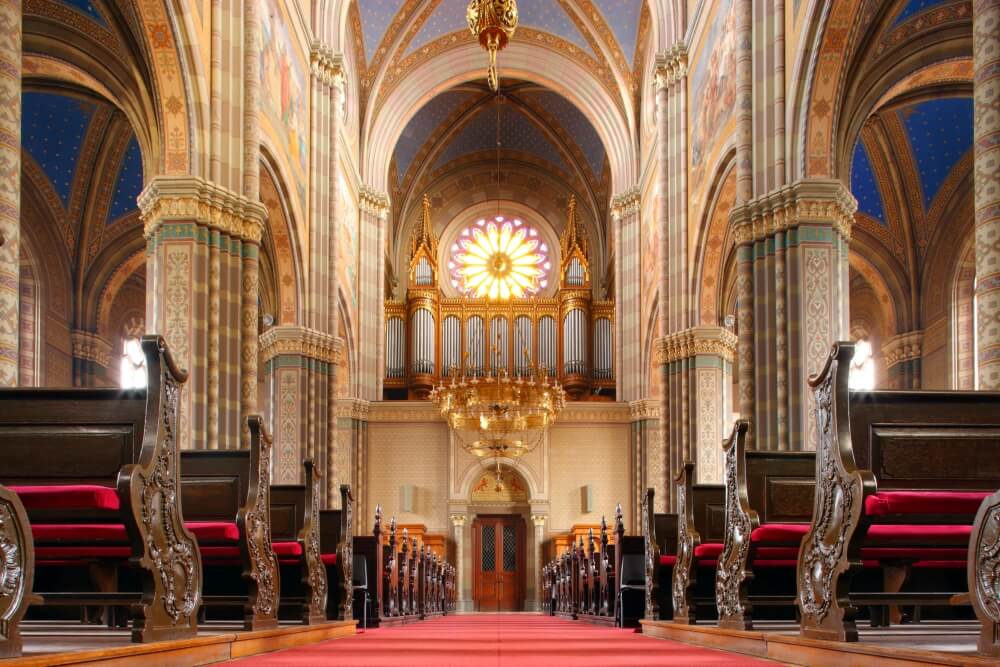 © Romulić & Stojčić
© Romulić & Stojčić
Breathtaking views of the Danube at Erdut and Aljmaš
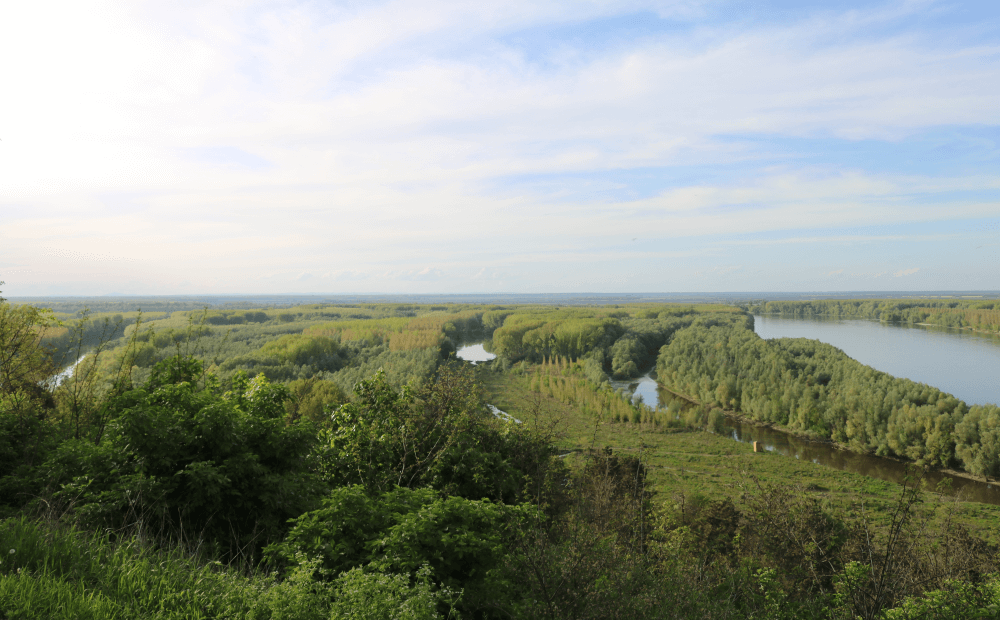 The Danube, as seen from the Brzica winery terrace in Erdut © Marc Rowlands.
The Danube, as seen from the Brzica winery terrace in Erdut © Marc Rowlands.
Slavonia is defined by its two longest rivers. To the south, after passing through Zagreb and Lonjsko Polje, the Sava forms a natural border between Slavonia and Bosnia. To the north, the Drava river first separates Croatia and Hungary. Then, after Donji Miholjac, it serves as the border between Slavonia from Baranja. Just a mile or so from Aljmaš, the Drava flows into the Danube, which partially separates Slavonia from Vojvodina.
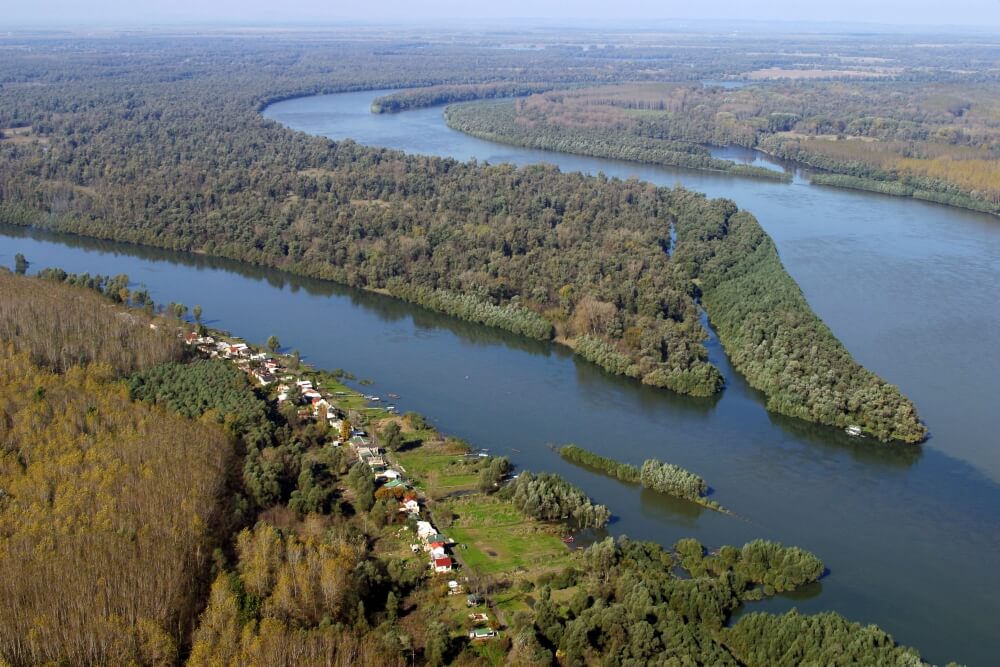 The Danube in eastern Slavonia © Romulić & Stojčić.
The Danube in eastern Slavonia © Romulić & Stojčić.
When you're standing overlooking the Danube in Erdut village, you could almost believe you're on an island. The peninsula in which the village lies is surrounded on three sides by the Danube. It weaves in and out of the landscape, causing great gulfs between the dense forest that occurs on each side. This area is noticeably raised above the height of regular, flat Slavonia and in Erdut, a small castle tower stands on a hill. It's one of the best places to look at the Danube. The other is from the Brzica winery, less than a kilometre away.
At Brzica, you're some 80 metres above the Danube. Here, winery owner Ivo Brzica has taken advantage of the view. He's built a beautiful holiday home where guests can stay. It's right next to his own dwelling and the winery. The properties share a huge, open and informal terrace overlooking the river. It's a great place to try the award-winning Brzica wines. They plant Graševina, Chardonnay, Cabernet Sauvignon, Merlot and Vranac. On some bottles, the label reads 1378. It's the number of kilometres the Danube has travelled to reach this point.
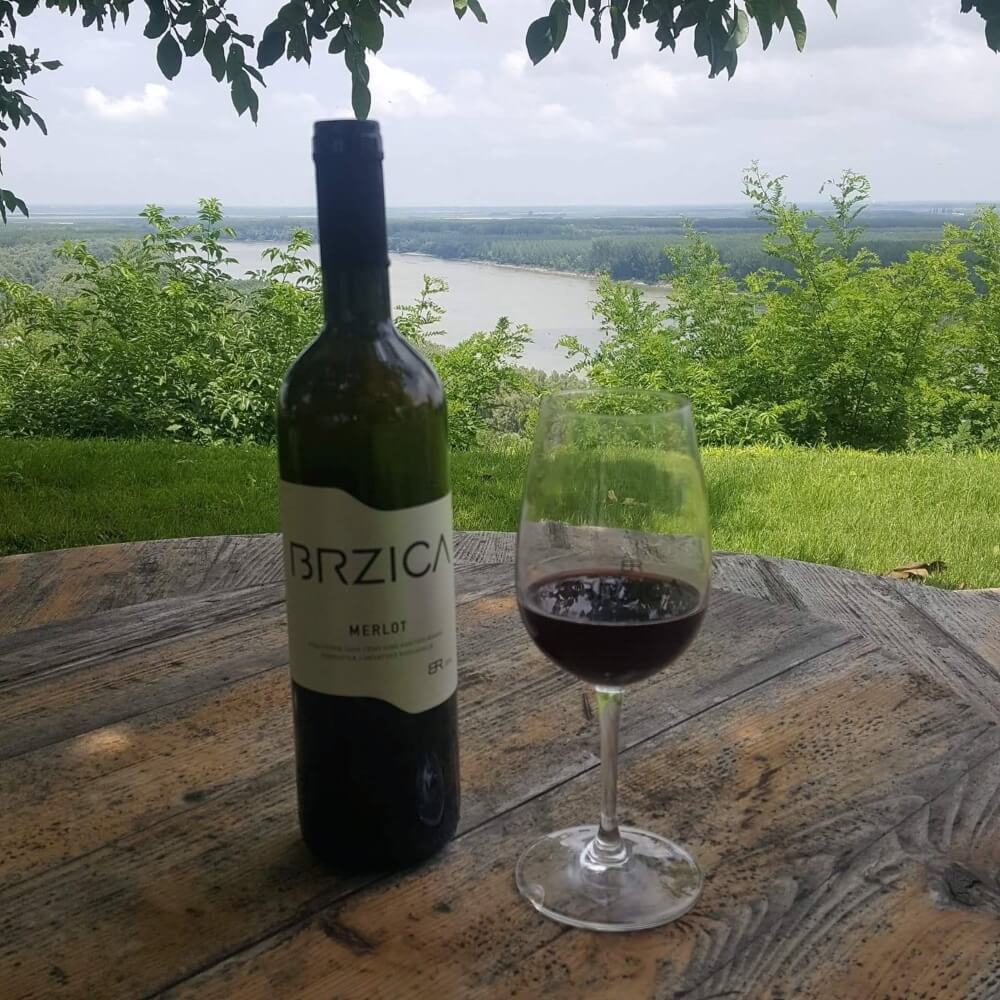 A glass of Brzica wine overlooking the Danube.
A glass of Brzica wine overlooking the Danube.
Erdut visitors wanting to get up closer to the Danube can now do just that. A newly appointed 10-kilometre footpath now runs alongside the river all the way from Erdut to Aljmaš. It's a beautiful walk through epic nature.
The unique landscape and winemaking traditions of northern Baranja
While much of Slavonia is uniformly flat, the topography is more varied in Baranja. Baranja Mountain stretches in a northeast-southwest direction between Beli Manastir and Batina. It is 21 kilometres long, three kilometres wide and much of its slopes are used for agriculture, grapes for winemaking, predominantly.
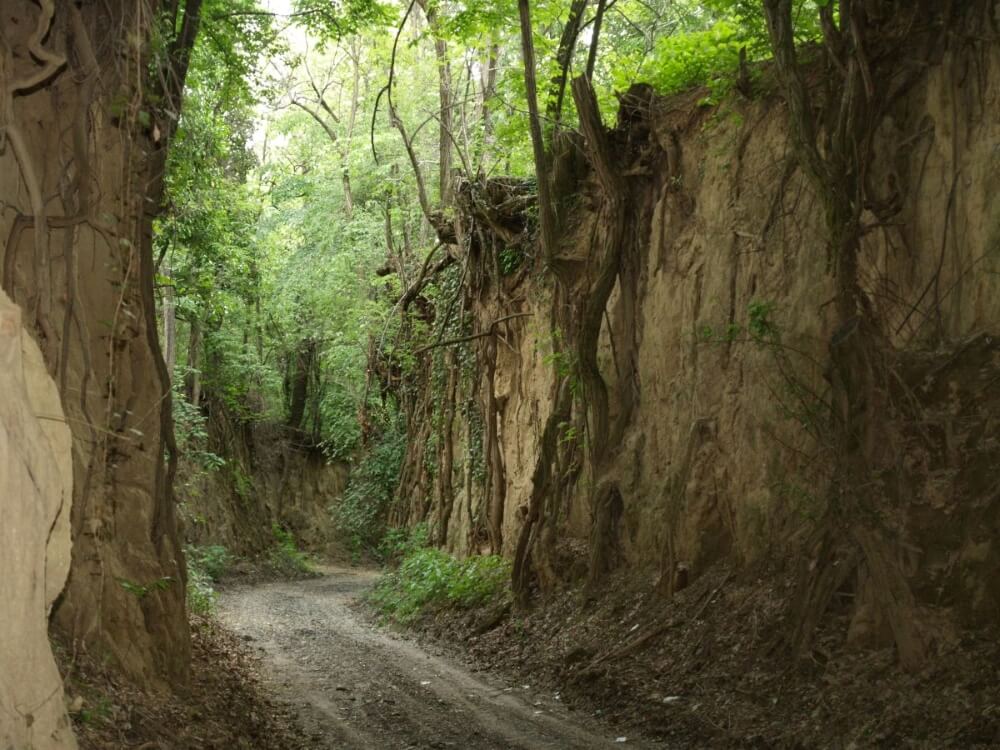 A Surduk in Baranja © Krešimir Čandrlić / Tourist Board of Osijek-Baranja County.
A Surduk in Baranja © Krešimir Čandrlić / Tourist Board of Osijek-Baranja County.
Long ago, heavy rains began to produce natural gorges which cut through the higher ground. Over time, some of these became considerably deep, widened by the flow of water and sometimes mud. Eventually, these gorges between hillsides became passageways for horses and carts. In Croatia, these narrow routes are exclusive to the Baranja region and are very pretty to walk. Their walls are lined with tree roots, which stop them from collapsing. The branches and leaves of these trees often overhang the gorge, sometimes giving you the impression you're in a tunnel. Such a route in Baranja is known as a Surduk.
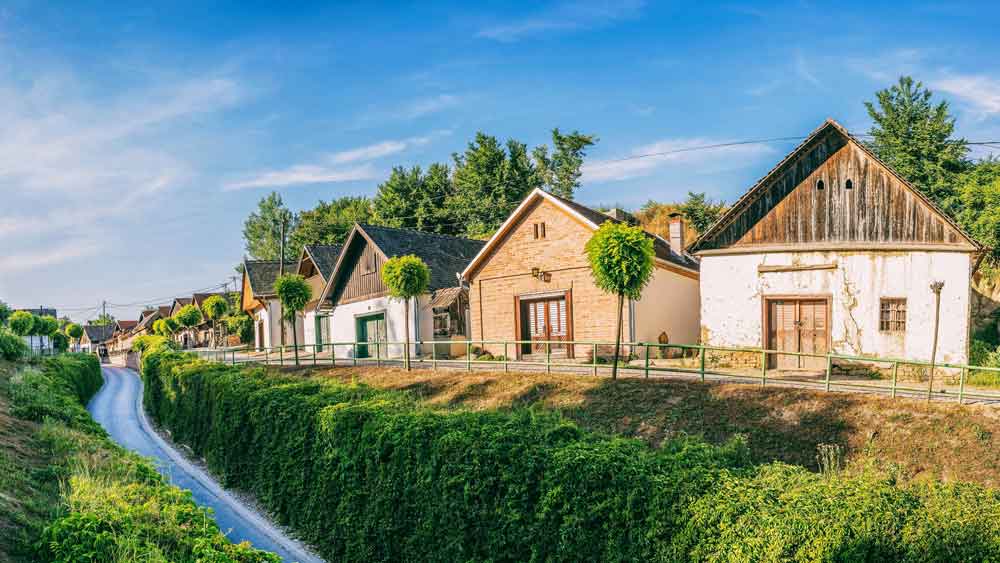 A line of traditional Baranja wine cellars. Unique in Croatia to Baranja, such a building is known as a Gator © Visit Baranja.
A line of traditional Baranja wine cellars. Unique in Croatia to Baranja, such a building is known as a Gator © Visit Baranja.
On this same ground, you'll find another phenomenon unique to Baranja. A Gator is a traditional wine cellar of this region. Sometimes found on the lower course of a Surduk, a Gator is unlike a typical wine cellar in that it has no subterranean section where the wine is stored. Instead, a Gator extends back into the hillside. Wine is kept in the deepest recesses of the building, where it is coolest. In several places in Baranja you can see a street with several of these buildings side by side. Usually, each Gator is owned by a different family and each will make their own particular family wine.
Podrumi Kolar family winery in Suza
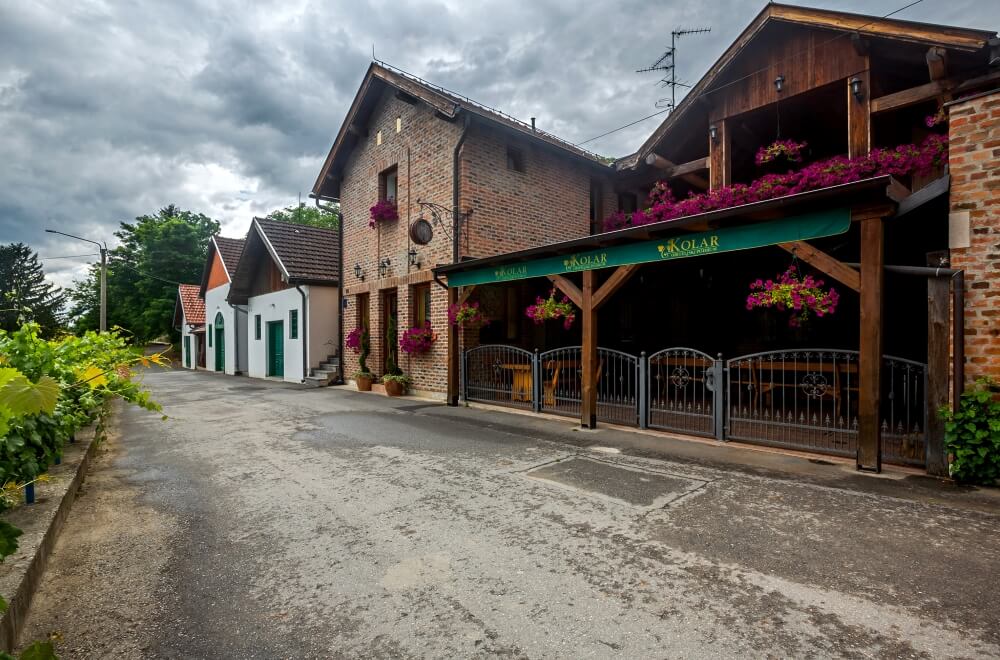 With a 100-year-old cellar and great wines, the Podrumi Kolar family winery in Suza.
With a 100-year-old cellar and great wines, the Podrumi Kolar family winery in Suza.
The Kolar family wine cellar is 100 years old, although the restaurant and tourism aspect of their enterprise has only been around since 2004. The whole family are involved and they purposefully intertwine their winemaking with a visitor offer. In addition to the restaurant attached to the wine cellar and they have a wonderful campsite just a couple of hundred metres down the road. All of their wines are great. But, if you visit, be sure to try their Sauvignon. Some say it's the best in the whole of Baranja.
Josić winery and restaurant in Zmajevac
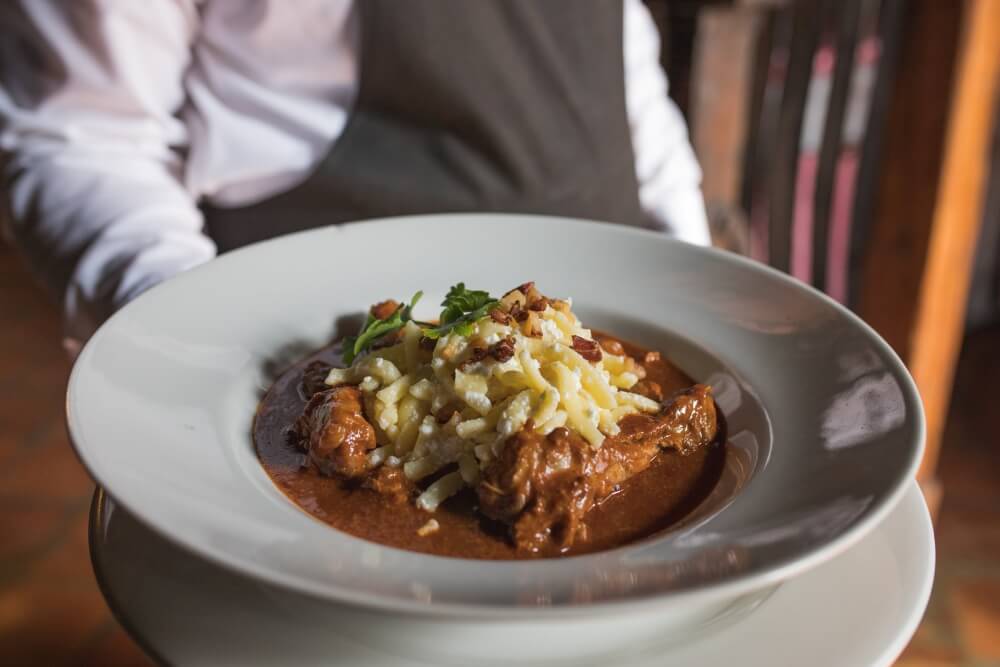 Traditional Baranja and Slavonia flavours at the Josić winery and restaurant in Zmajevac.
Traditional Baranja and Slavonia flavours at the Josić winery and restaurant in Zmajevac.
At the Josić winery and restaurant in Zmajevac they make brilliant wines. Among them, Baranja shiller, Cabernet Sauvignon, Chardonnay, Graševina, Pinot Gris and Sauvignon. You can visit the wine cellars and try traditional foods of the region in their extensive restaurant.
Vinarija Gerštmajer in Zmajevac
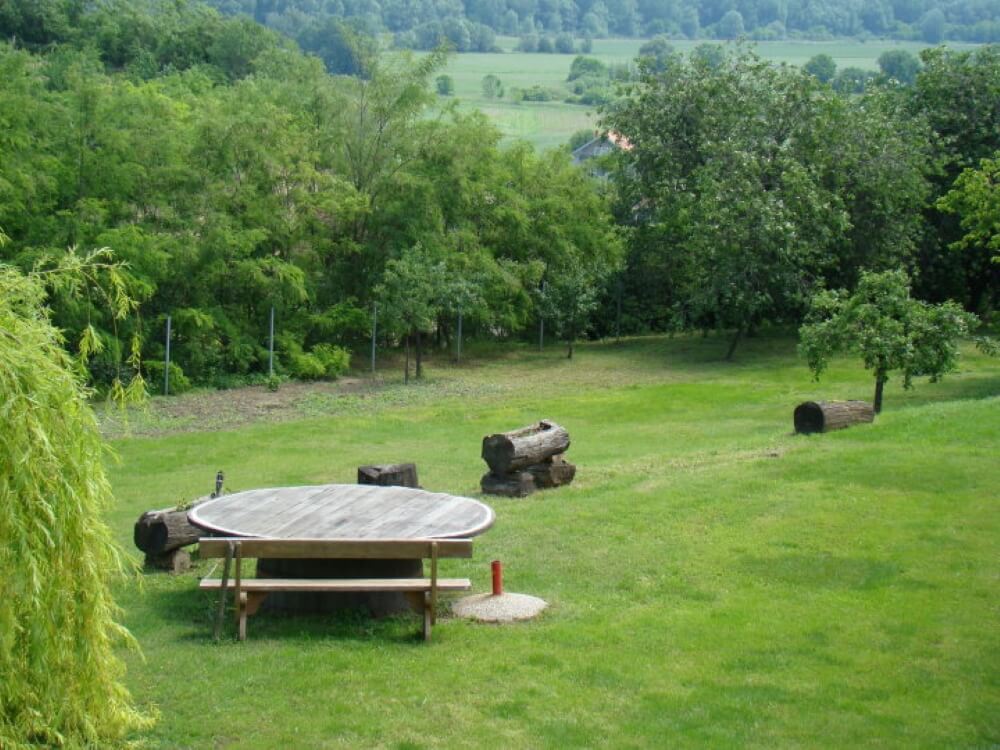 Incredible views from the garden at Vinarija Gerštmajer in Zmajevac.
Incredible views from the garden at Vinarija Gerštmajer in Zmajevac.
A deep dust gathers on some of the oldest bottles kept in the cellar at Vinarija Gerstmajer. And, there's plenty of those. The charming family patriarch is clearly a proud wine enthusiast and reserves some bottles from every year of their celebrated but small production. Sadly, this archive now stretches back only until the mid-1990s. It used to be much older, cataloguing all of the years his own father ran the winery. But, when the family returned after the war, they were greeted by empty cellars. The cellars are once again full. You can try them in the cellar or out on the terrace, overlooking a scene of uninterrupted nature.
The wildlife-rich wetlands of Kopački rit
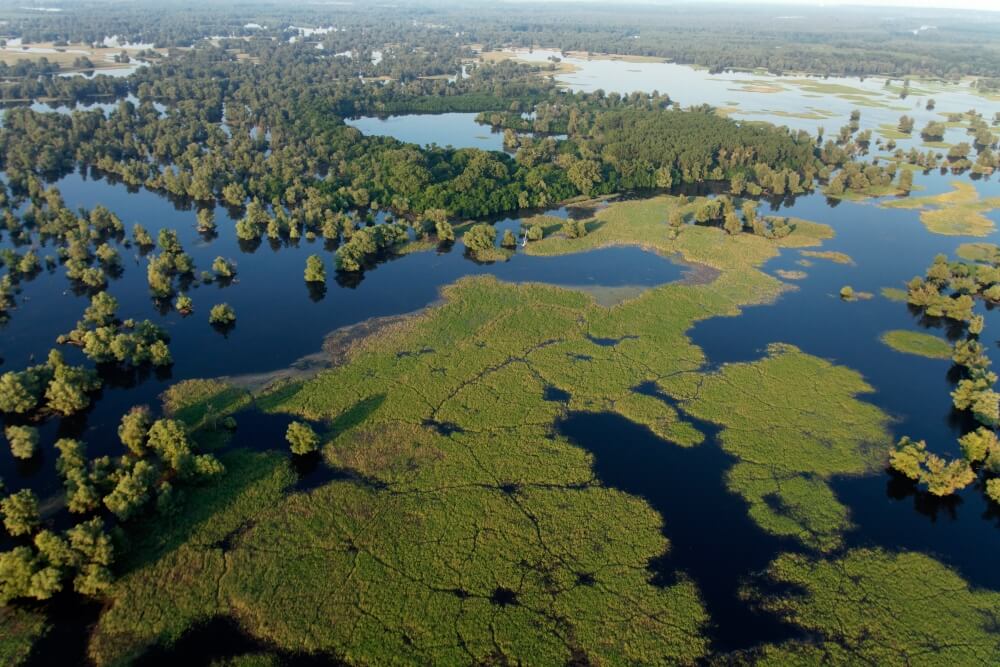 Wetlands of Kopački rit © Tourist Board of Osijek-Baranja County.
Wetlands of Kopački rit © Tourist Board of Osijek-Baranja County.
Occupying the marches, lakes and floodland between the Drava and the Danube, Nature Park Kopački rit is one of Europe's largest wetlands. Although a home to many different types of life, it is most famous for its bird population. As many as 300 different species of birds inhabit the park, many of them being migratory and nesting species. Of particular note, a large colony of grey heron and and the largest population of woodpeckers in the entire Danube basin. You can now tour a section of the waters in a large visitor boat. It is electrically powered so as not to disturb the life-rich riverbanks. After the boat drops you off, make your way through the rest of the park across specially constructed pathways that wind their way across the waters and reeds.
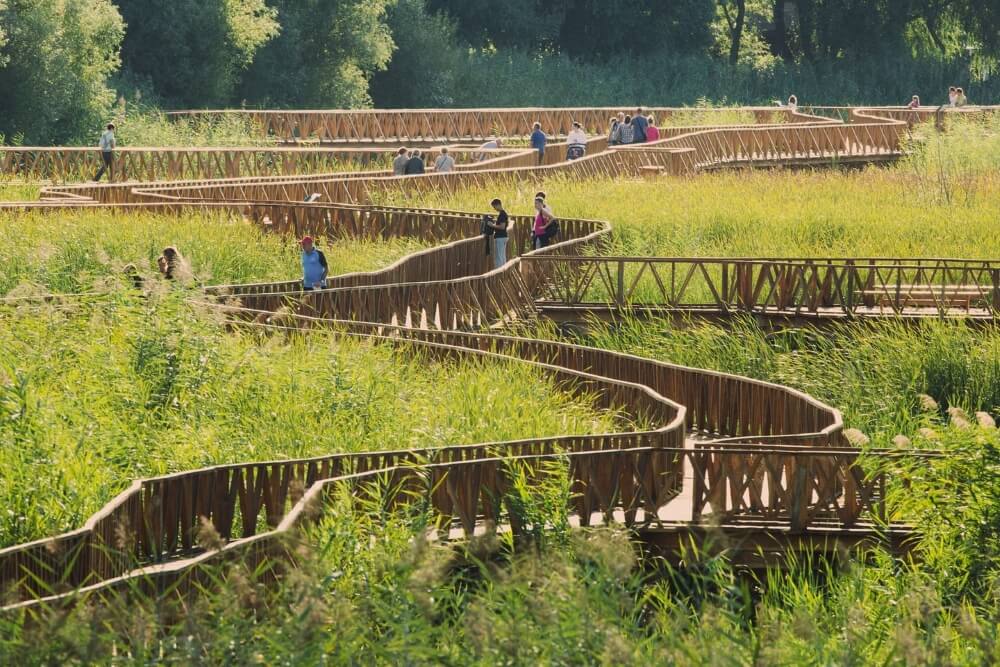 The wooden walkways of Kopački rit Nature Park in Osijek-Baranja County © Romulić & Stojčić.
The wooden walkways of Kopački rit Nature Park in Osijek-Baranja County © Romulić & Stojčić.
The OPGs of Osijek-Baranja County
The landscape in Osijek-Baranja County is only so picturesque because of the people who live in it. It is their endeavours that shape it. Traditional agricultural pursuits explain the pretty rows of vineyards, the different coloured fields and gardens filled with fruit trees. While some agriculture here exists on a grand scale, many families in the region make the most of their own small plots of land.
Osijek-Baranja County family farms or OPGs preserve the traditions of the region, not only in the way they use the land but in the produce that results. From the beekeeping that makes EU-protected honey to the vineyards producing Croatia's best white wine, practices in these family farms are often passed down from generation to generation. The best way to learn how they do it – and try the amazing traditional flavours of Osijek-Baranja County – is to go to an OPG. Here are just several you can visit.
Zorić distillery in Erdut
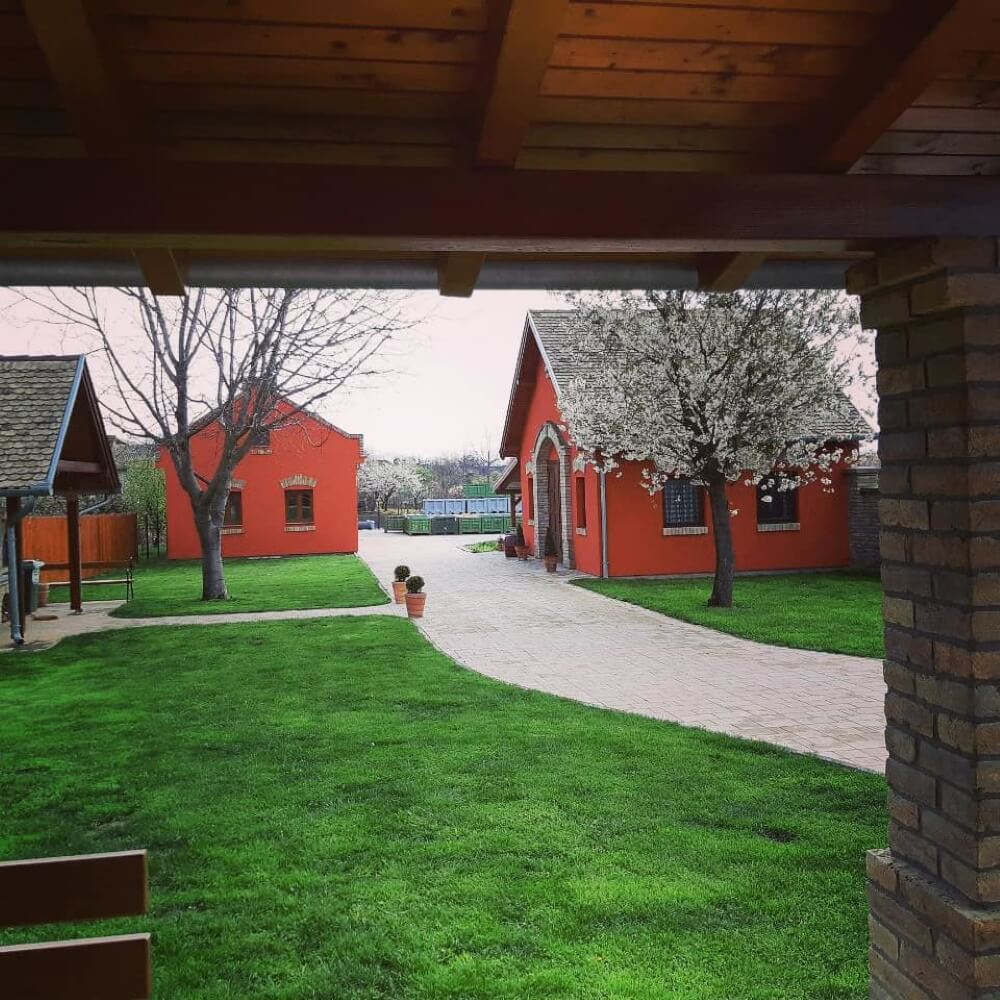 Zorić distillery in Erdut, Osijek-Baranja County.
Zorić distillery in Erdut, Osijek-Baranja County.
The Zorić family in Erdut have long been growing fruit and making Croatian brandy aka rakija. But, this youngest generation, lead by youthful father Dinko and his wife Sanja, have upped their game significantly. They have built the most modern craft rakija distillery in the region. From there, they make one of Croatia's best new premium rakijas, Divania. In English or Croatian, they will guide you around the distillery and explain the process before letting you try it on their lovely terrace. If you're lucky, you might also get to try the family-made kobasica sausages – they're very good! Their rakijas are made from apricots, quinces, apples, pears and cherries and the family are great hosts.
Seoski turizam Lacković in Bilje
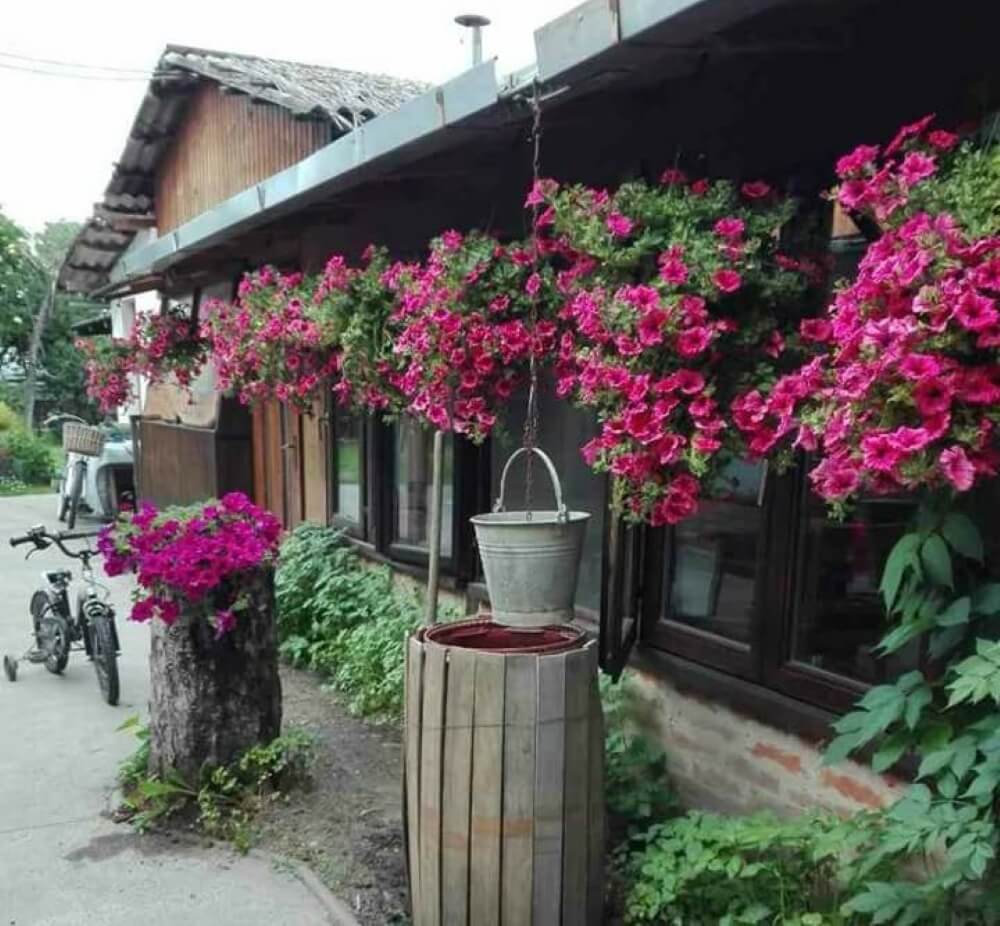 Filled with flowers, Seoski turizam Lacković in Bilje.
Filled with flowers, Seoski turizam Lacković in Bilje.
A beautiful family-run farm, with 16 beds for guests, Seoski turizam Lacković are used to hosting visitors. The farm itself has pretty rows of vegetables out back. Next to them, a variety of birds are kept. The hosting area has a lovely terrace with a view of the pretty tree-lined path that extends down through the large garden. During the recent Month of Baranja Cooking (Mjesec baranjske kuhinje), visitors tried their hand at making traditional baked foods pita and kiflice.
OPG Čudesna šuma
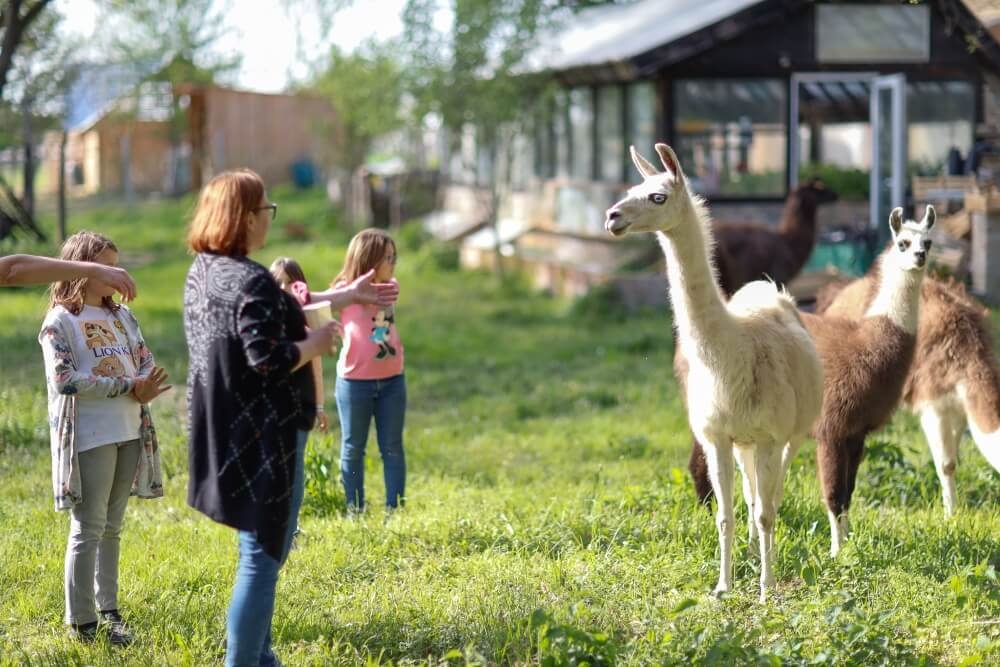 Meeting the llamas at OPG Čudesna šuma © Turistička zajednica Općine Bilje - Kopački rit.
Meeting the llamas at OPG Čudesna šuma © Turistička zajednica Općine Bilje - Kopački rit.
Visit the llamas or a special gastronomic event at this future eco-village and food forest. To read a detailed reportage from our spring 2021 visit to OPG Čudesna šuma, look here.
Both the author and Total Croatia News would like to thank the following for their invaluable help in creating this article: Ivana Jurić and the Tourist Board of Osijek-Baranja County, Marija Burek and the Tourist Board of Đakovo, Renata Forjan and Turistička zajednica Općine Bilje - Kopački rit and Domagoj Butković of expert travel guides to Slavonia and Osijek-Baranja County, Kulen travel.
10 PHOTOS: Incredible Images of the Best Croatian Artistic Photography 2021
March 4, 2021 – Following a national competition, the Croatian Photo Association have chosen the best Croatian artistic photography of the year. 10 incredible images will now represent Croatia in the prestigious Biennial of the International Federation of Photographic Art in Paris.
Following a national competition, the Croatian Photo Association (Hrvatski Fotosavez) have chosen the best Croatian artistic photography of the year. 10 incredible images will now represent Croatia in the prestigious Biennial of the International Federation of Photographic Art (FIAP) in Paris.
The International Federation of Photographic Art (FIAP - Fédération Internationale de l'Art Photographique)
The International Federation of Photographic Art (FIAP - Fédération Internationale de l'Art Photographique) is an international organization of national associations of photography. More than 85 national associations are members, comprising nearly one million individual photographers.
FIAP was founded by M. Van de Wijer of Belgium in 1946. Its first congress took place in Bern, Switzerland in 1950. At this time, one of the national photographic associations represented was that of Yugoslavia. Following the federation's break up, each of its former republics now runs its own national photography association. Continuing a 70 year tradition, they still enter the prestigious International Federation of Photographic Art Biennial.
FIAP congresses have grown so large over the years, they are now seperated into different categories and held once every two years. Black and white and nature photography have their biennials one year, and the next year colour photography gets its biennial. The competition congress visits different countries each year. The 2021 FIAP Colour Biennial will be held in Paris, France.
The FIAP Colour Biennial competition and congress is split into two parts. The oldest, and arguably the most prestigious part of the competition, sees the best photography appearing in print and displayed individually upon the walls of the host venue. 10 examples of the best Croatian artistic photography of the year have been chosen by Hrvatski Fotosavez to represent Croatia in this section of the event.
A further 20 Croatian entries will appear in the congress's other section – projected photography. These entries are submitted digitally, rather than in print, to be shown in projection at the event.
Following a national competition, the Croatian Photo Association have chosen the best Croatian artistic photography of the year to represent Croatia in the prestigious congress and competition.
The Croatian Photo Association (Hrvatski Fotosavez)
The Croatian Photo Association (Hrvatski Fotosavez) is the legal successor of the Photographic Association of Croatia, founded on March 27, 1949 in Zagreb, and the historical successor of the Croatian Amateur Photographic Association, founded on June 11, 1939 in Zagreb. Its members are individual photography clubs and societies from all over Croatia. From their ranks, the best Croatian artistic photography of the year have been chosen.
Photography and cinema club 'Picok' from Đurđevac (Foto kino klub Picok, Đurđevac)
For the 2021 entries to the Colour Photography Biennial in Paris, special mention must be given to the remarkable achievements of one society of photographers from the town of Đurđevac. Of the 30 photographs selected to represent Croatia in this year's competition, no less than 8 of them came from members of this one photography society. In addition to Mato Zeman and Željko Car, who are interviewed below, works by Ivan Hećimović and Ivan Nemet were also selected. According to these results, Photography and cinema club 'Picok' from Đurđevac are the most successful association in this year's Croatian Photo Association competition. Coincidentally, the four Đurđevac photographers had a large joint exhibition of award-winning photographs in Đurđevac just last year. After the event, all 40 works exhibited were donated by the photographers to the city of Đurđevac. Bravo Picoki!
FIAP, Hrvatski Fotosavez and the 10 photographers chosen for 2021 FIAP Colour Biennial have kindly given Total Croatia News exclusive permission to reproduce this year's print entries. Here, we profile the best Croatian artistic photography of the year and meet the photographers.
The Best Croatian Artistic Photography 2021
Damir Rajle 'Sunshine Road'
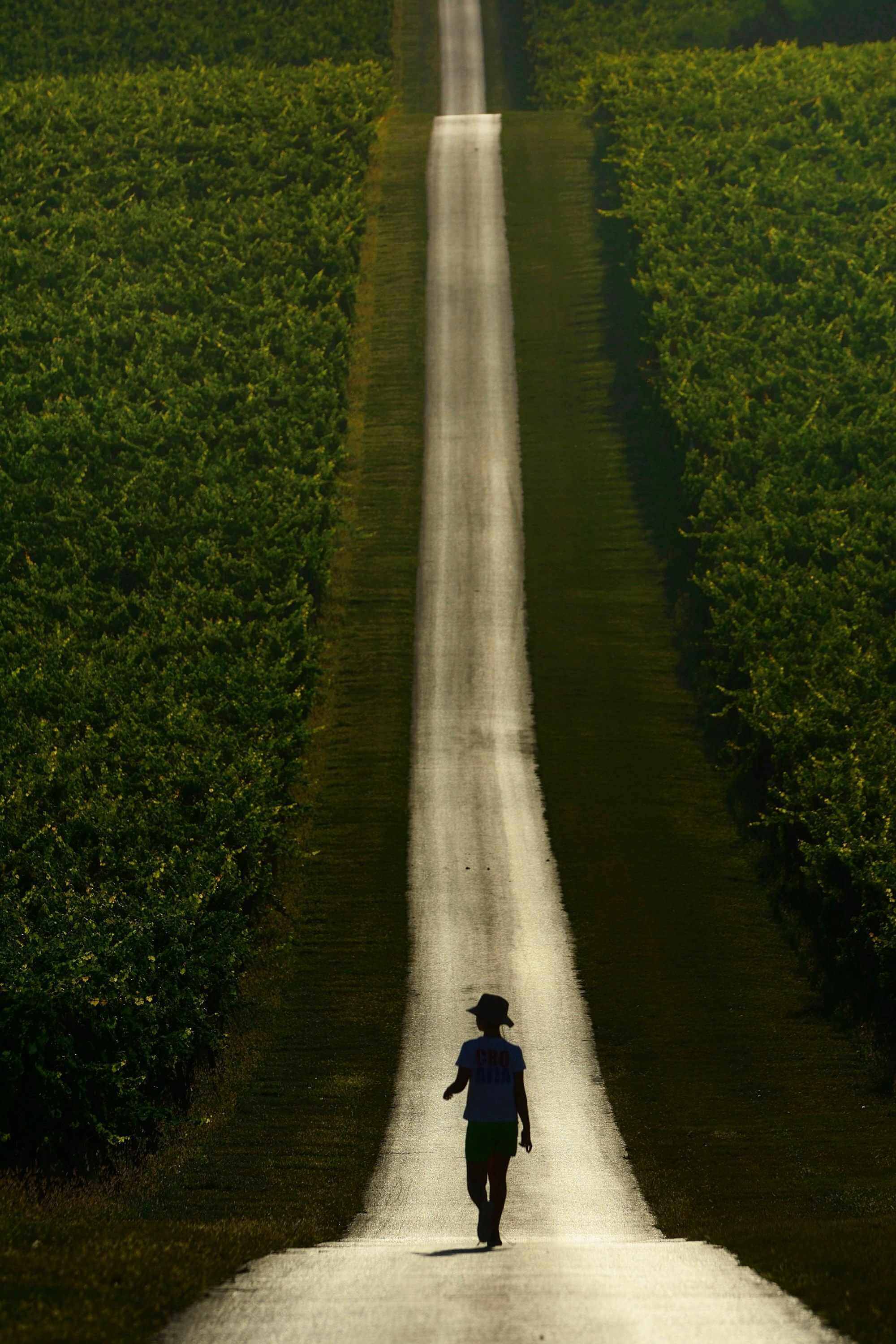 Croatian artistic photography by Damir Rajle
Croatian artistic photography by Damir Rajle
My name is Damir Rajle. I am semi-professional photographer from Osijek. My primary profession is cartographer and land surveyor, mostly involved in digital orthophoto and topographic maps. My photograph 'Sunshine Road' is a wine road in Baranja. I am very often in that exact place. But, that day, the setting sun was directly ahead and so I tried a couple of shots. Suddenly, a boy came along, silhouetting himself against the sunlit road. The naturally hilly landscape of the vineyard adds to the composition.
Dušan Grbac 'Žuti'
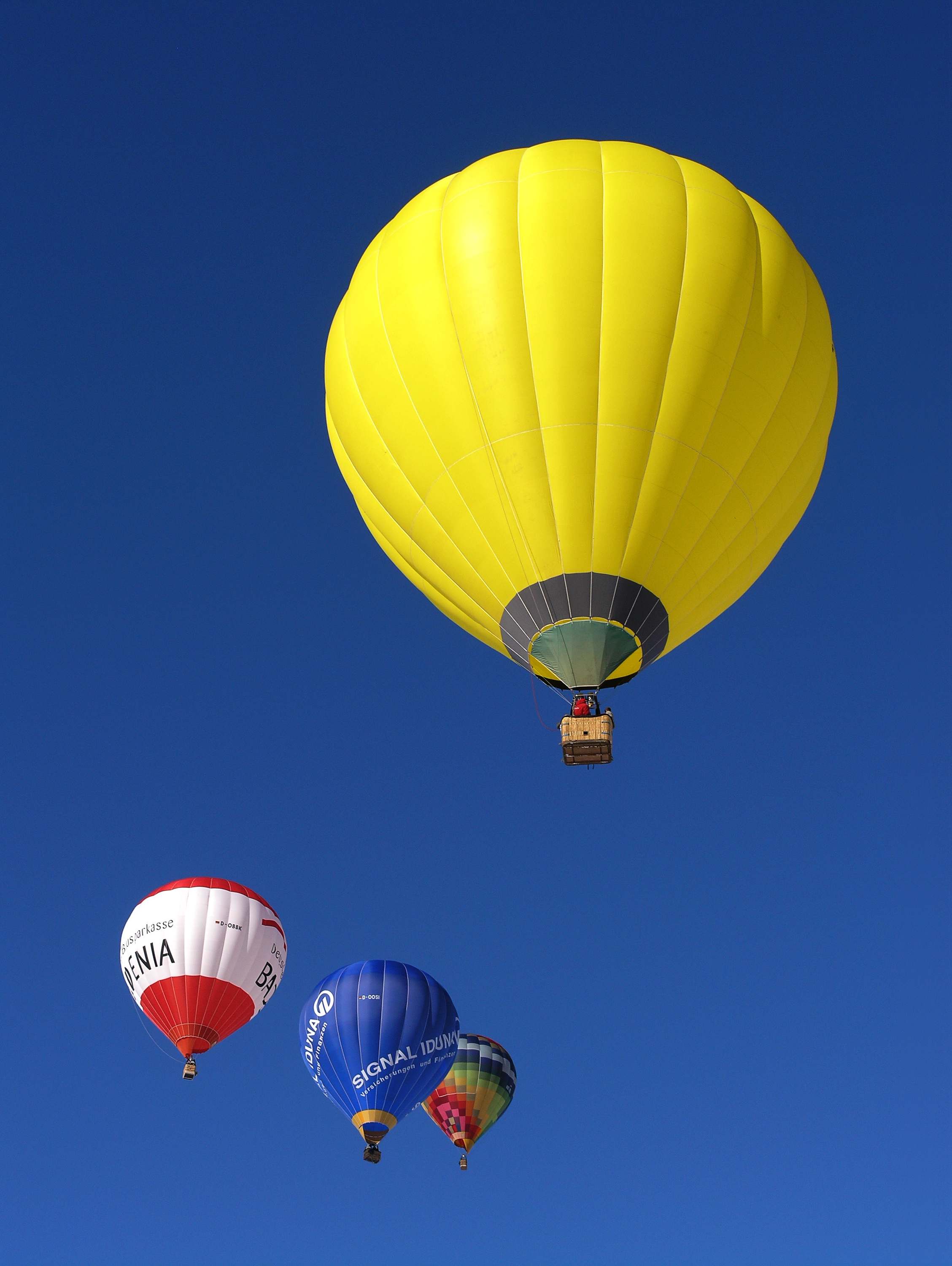 Croatian artistic photography by Dušan Grbac
Croatian artistic photography by Dušan Grbac
My name is Dušan Grbac and I was born in 1960, in Rovinj. I started shooting and developing black and white photography in 1975. I developed the photographs on my own in a small, analogue darkroom at home. In 1982 I became a member of the Photo Club Rovinj and thereafter participated in a number of exhibitions. In 2002 I embraced digital photography. I actually work as an IT specialist. In my free time, I like to engage in photography and I've held dozens of lectures and workshops about photography. I'd really like to pass on to others everything I've learned about photography over the years. 'Žuti' (Yellow) was actually taken in January 2006 in the Italian town of Dobbiaco. The annual balloon show was held at a temperature of -16 °C! This made the sky crystal blue. I couldn't resist that tonal contrast, the colours... and 'voila'.
Mirjana Spajić Buturac 'Saturn'
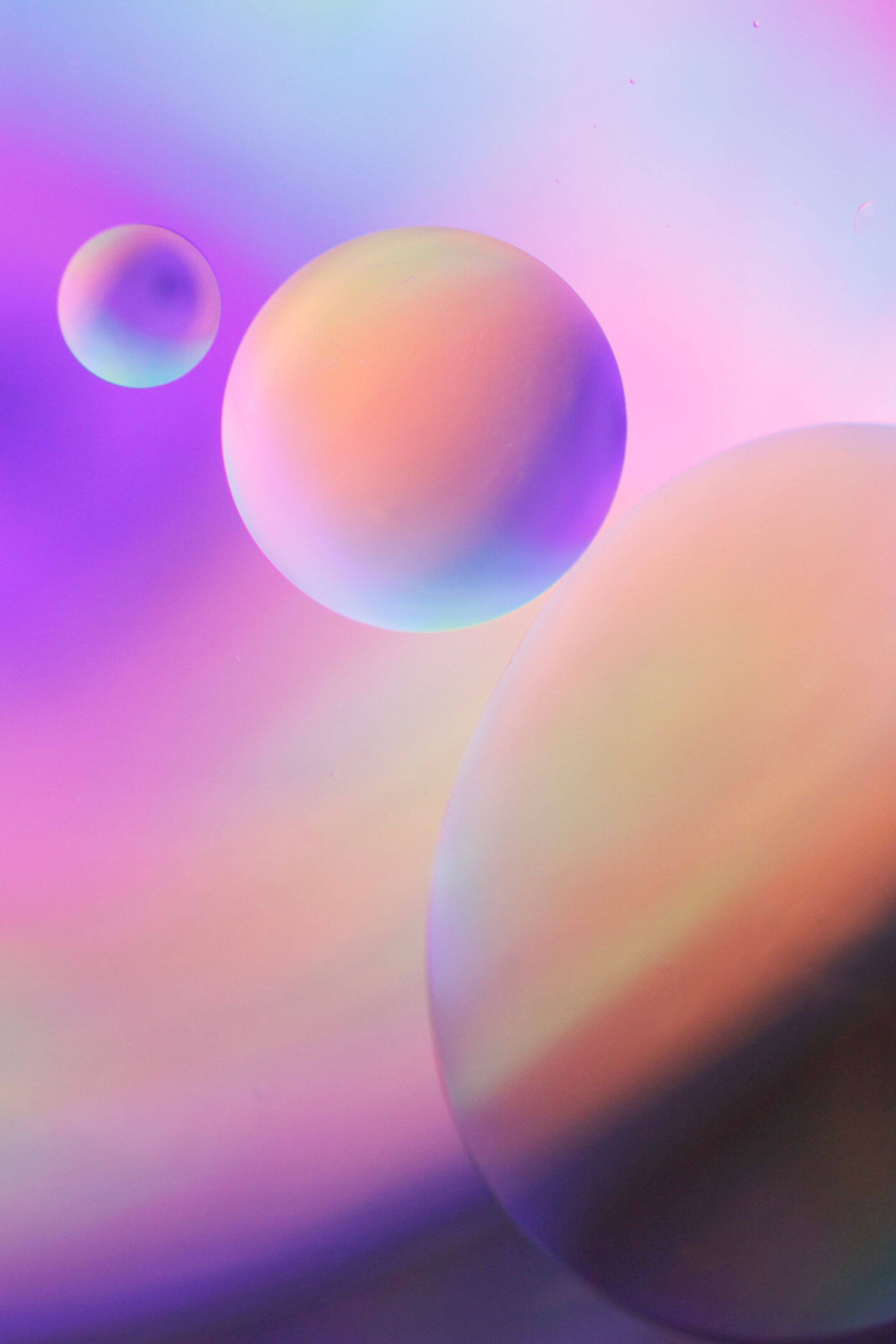 Croatian artistic photography by Mirjana Spajić Buturac
Croatian artistic photography by Mirjana Spajić Buturac
My name is Mirjana Spajić Buturac. I'm originally from Vinkovci, but I have been living in Zagreb for 20 years. I studied in Osijek and by profession, I am a professor of mathematics and informatics. I've been interested in photography since my student days. However, it was a colleague, Professor Vladimir Šimunić that truly awoke my passion for photography in me and in 2014 I certified as a photographer, enrolled in Fotoklub Zagreb and started participating in photography competitions. I took an online course at Udemy to perfected my use of Photoshop and photo processing. I work at the School of Crafts for Personal Services in Zagreb, which, among other things, has a photography major, and in addition to mathematics and computer science, I now also teach digital photography. I am so happy that photography has become a part of my job! 'Saturn' was taken in December 2020. It shows drops of olive oil in water. Under the influence of ultraviolet light and a fluorescent poster under the bowl of water, the oil droplets took on a three-dimensional effect. My seven-year-old son Leon noticed that the largest droplet had a dark ring, like Saturn. That's how the photo got its name.
Mato Zeman 'Spring Fields'
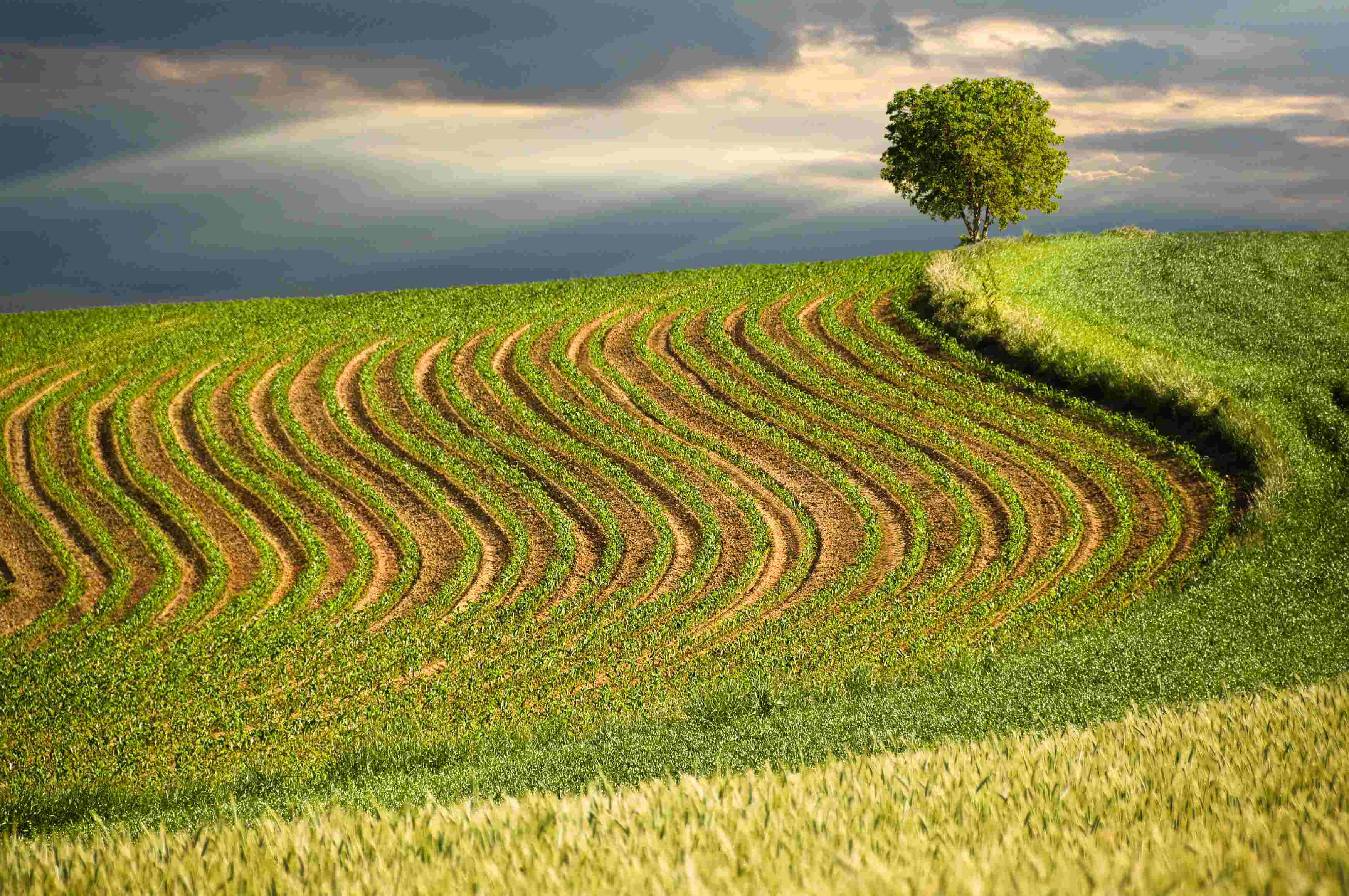 Croatian artistic photography by Mato Zeman
Croatian artistic photography by Mato Zeman
My name is Mato Zeman and photography has been my hobby for long time. I live in Kloštar Podravski, a small village in Podravina, between the river Drava on the north and Bilogora mountain on the south. In my full0time job I worked in the 112 Emergency Centre in Koprivnica, but I've now been retired for 2 years. Photography is my hobby for a long time. I've participated in several international photo contests. In 2015, FIAP awarded me the honorary title FIAP Artist and three years later the title EFIAP (Excellence Fédération Internationale de l'Art Photographique). I am a member of the Photo and Cinema club 'Picok' in Đurđevac. I'm also a member of the local artistic association 'Kloštranska paleta' in my home village. Two of my works were selected for FIAP 2021 Biennial of Colour Photography in France and will represent my country. I am very proud of this. The one appearing in print 'Spring Fields' was taken at the fields of young corn on the slopes of Bilogora. The rows of corn are in a nice S line, the sky is partly cloudy with the sun shining through.
Nenad Martić 'Red, White and Blue 2'
 Croatian artistic photography by Nenad Martić
Croatian artistic photography by Nenad Martić
My name is Nenad Martić. I was born in 1951 in Zagreb, where I graduated from the Department of Fine Arts at the Faculty of Education, University of Zagreb.I devoted most of my professional career to graphic design and illustration, beginning in the 1980s with the Start and Svijet magazines. The second half of my career was marked by the gradual introduction of a new artistic expression; digital photography. Free of assignment of specific commissions and deadlines, artistic photography became a passion. I dedicated myself to it for the last ten years. I take different kinds of photographs, but I most prefer street photography. It's a kind of documentary photography, focusing on the nuances of human gestures and street context, capturing and conveying the moment to those who are not there. 2014 was a turning point for me because I joined Photo Club Zagreb. Thereafter, I had three solo exhibitions, was included in over a hundred group ones and won several international and national awards and nominations. These included the Ferdinand Soprano Grand Prix and the Viktor Hreljanovic Award from Photo Club Rijeka in 2019, most successful author and the most successful Croatian author at the 39th Zagreb Salona in 2020 and I won the prestigious Tošo Dabac Award 2019 for outstanding contribution to photography in Croatia. My photo 'Red, White and Blue 2' was taken on the island of Lošinj. The model is my daughter. It is one of a series of photographs taken with red cloth.
Silvija Butković 'Together'
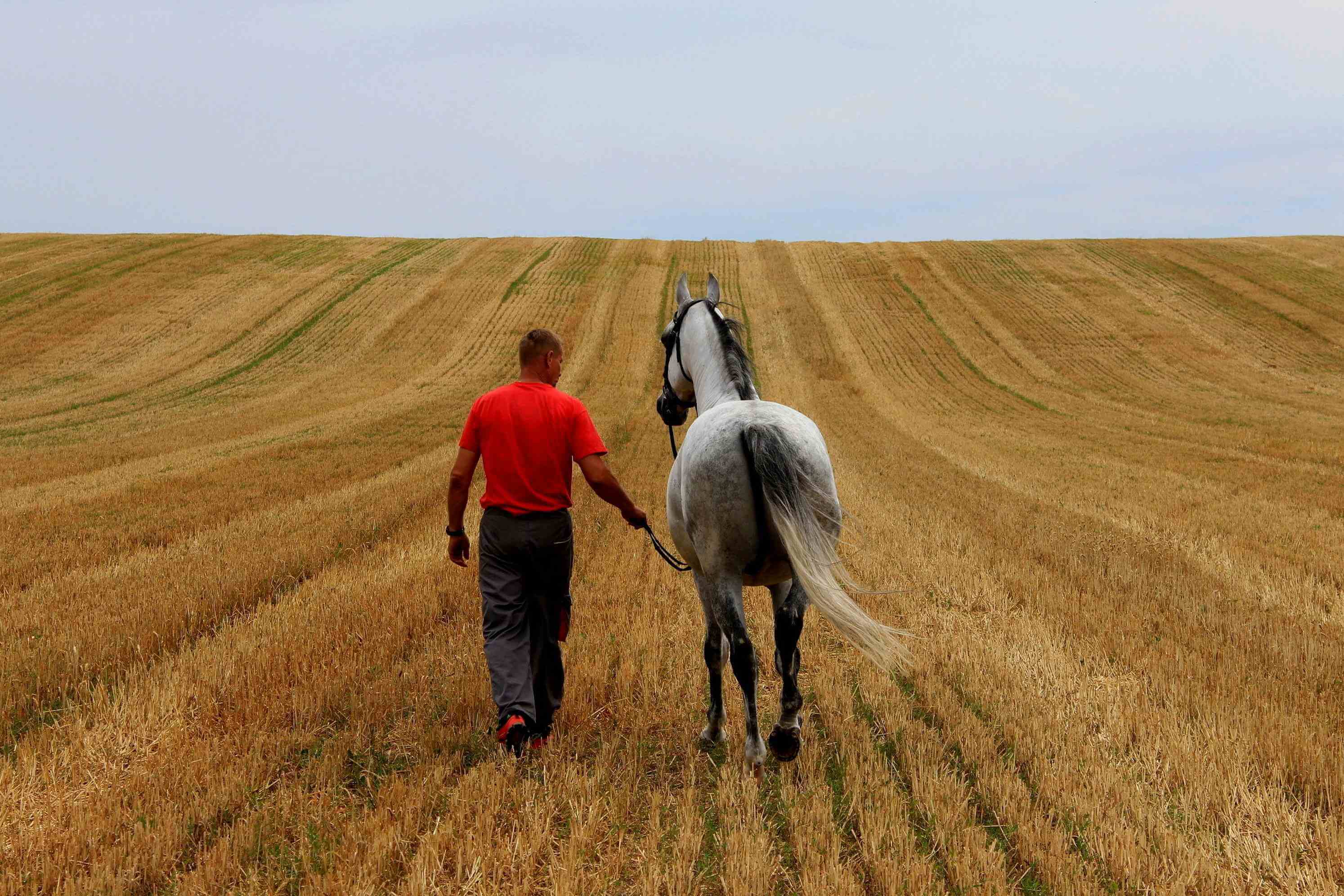 Croatian artistic photography by Silvija Butkovic
Croatian artistic photography by Silvija Butkovic
My name is Silvija Butkovic and I was born in 1964 in Osijek, Croatia. As a child, I lived on the island Lošinj. I returned to Slavonia when I entered University. I now live and work in Đakovo as manager of tourism an public relations at the State Stud Farm Đakovo (National Lipizzan Stud Farm Đakovo - Državna ergela Đakovo). Language and photography are my great loves. Lately, I've been making photo haigas, a Japanese combination of poetry and photography. The World Haiku Association recently awarded me the title Master of Haiga for my work. You can see some of it on their website www.worldhaiku.net/haiga. Lošinj and the heart of the Slavonian plain are a constant inspiration. I also adore horses and I love watching them through the camera. I'm a member of 'Photo-cinema Club Djakovo', 'Photo-Club Rijeka' and 'Matica Hrvatska'
Željko Car 'Spring'
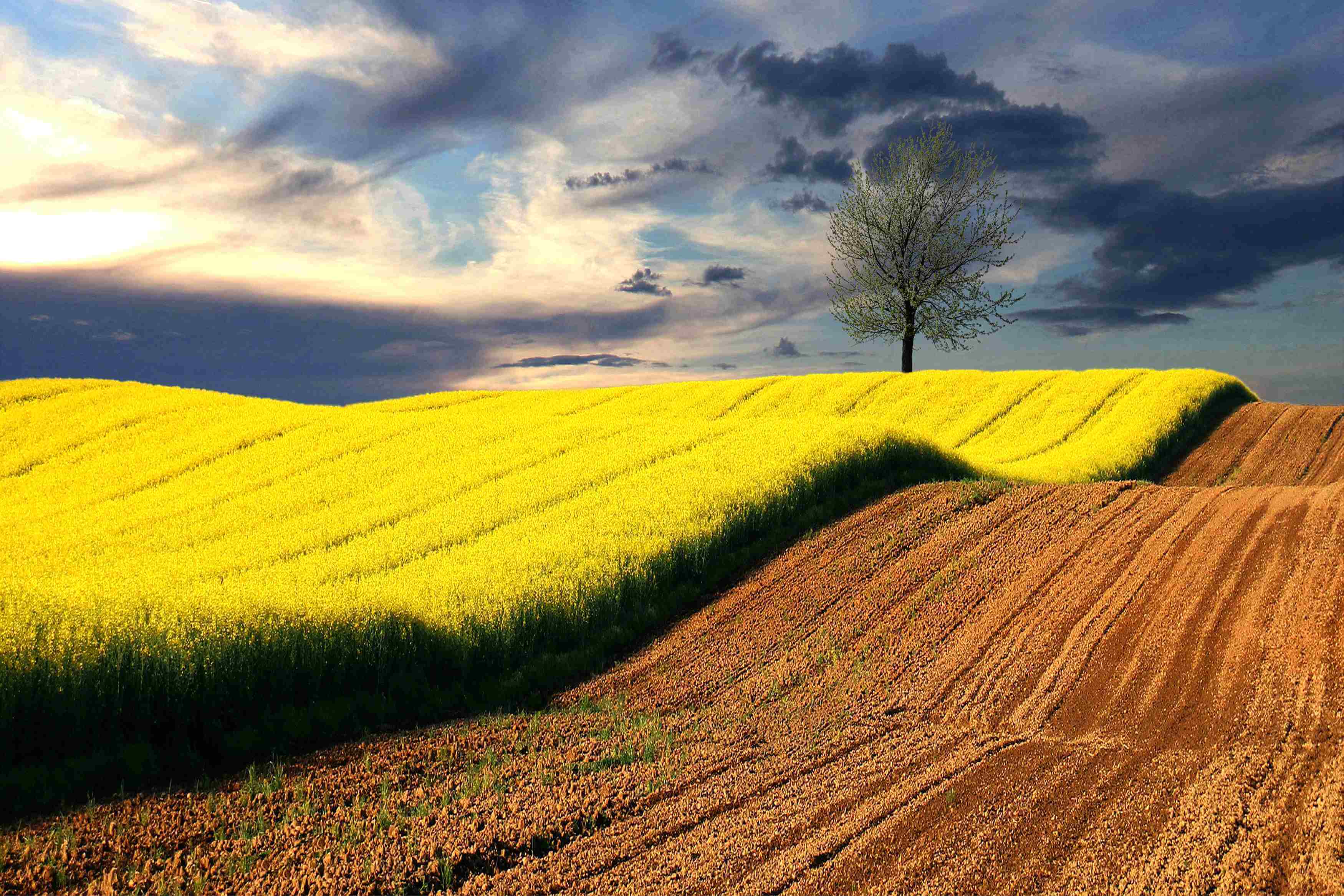 Croatian artistic photography by Željko Car
Croatian artistic photography by Željko Car
My name is Željko Car. I'm a lawyer by profession. I first published photos in newspapers (I was a correspondent for several). Since 1984 I've participated in exhibitions in many countries around the world. I have more than 300 awards and diplomas, and I received the honorary title of EFIAP. Two of my photos were selected for the 2021 Biennial of Colour Photography in France - 'Spring' and 'Snow on the river bank'. Both photos were taken near Đurđevac, the city where I live. With 'Spring' I wanted to show the beauty and ambient values of the area where I live. It was actually taken in the spring of 2000.
Aleksandar Tomulić 'Valencia 5'
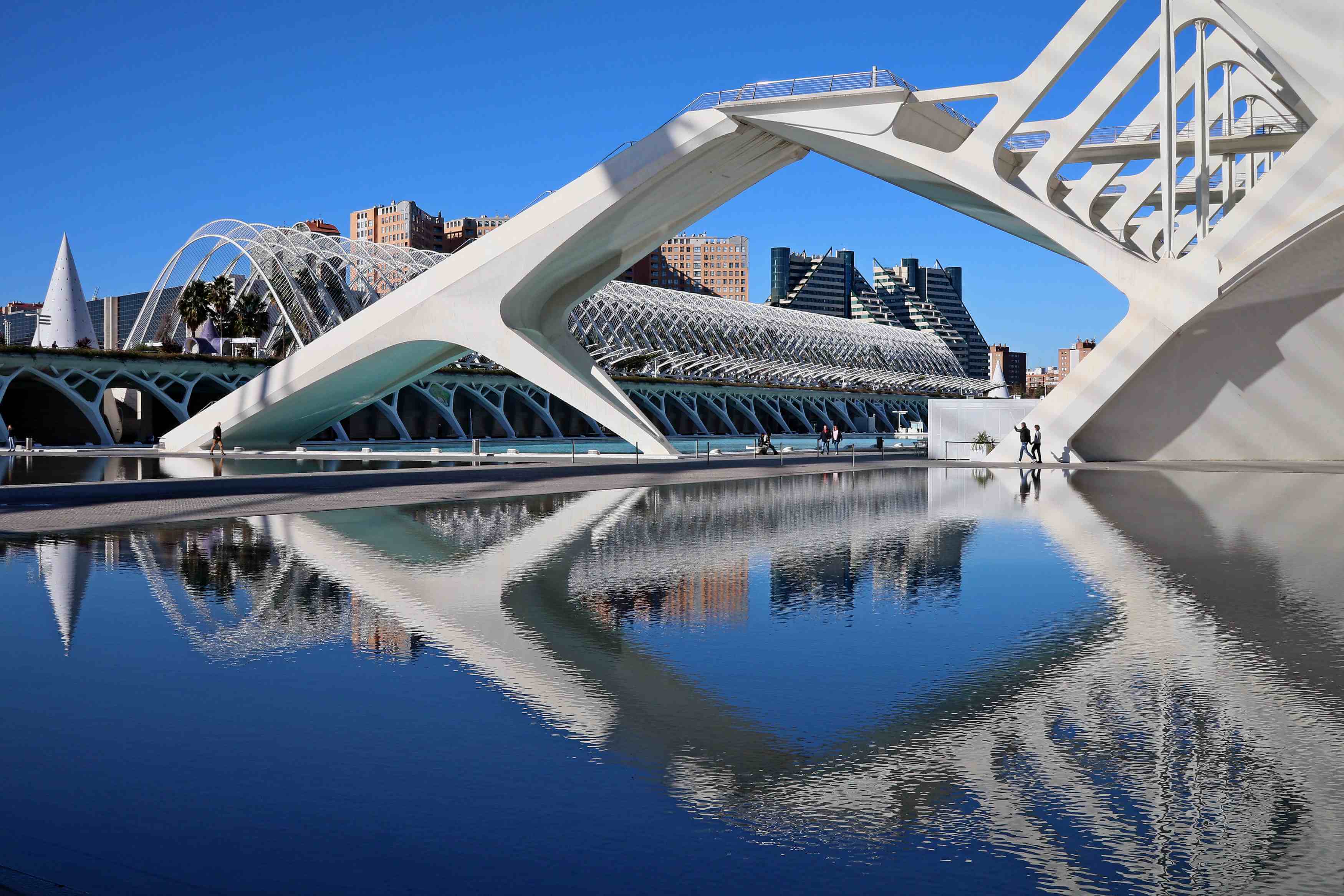 Croatian artistic photography by Aleksandar Tomulić
Croatian artistic photography by Aleksandar Tomulić
My name is Aleksandar Tomulić and I'm from Rijeka. I'm a semi-professional photographer. My main profession is IT. I've been taking photos since I was a kid. I was born in 1967. I became more seriously involved in photography in 2004. It's the magic of capturing an unrepeatable moment that fascinates me, and the feel for light and composition. I prefer street photography and seaside motifs, and I like to experiment with abstract images. Since 2013 I've volunteered to give classes and workshops. I'd like to pass on what I've learned about photography. I've had 15 one-man shows, participated in over 500 group shows and received over 320 awards. The Croatian Photo Association have selected my work ten times to represent Croatia at FIAP Biennales. I'm a member of 'Fotoklub Color' and 'Fotoklub Pag.' My photo 'Valencia 5' was taken, of course, in Valencia in the City of Art and Science. I took the shot in 2018. That new part of Valencia is the concept of famous architect Santiago Calatrava.
Ante Jaša 'Knot in Passage'
 Croatian artistic photography by Ante Jaša
Croatian artistic photography by Ante Jaša
My name is Ante Jaša. I was born on 19th October 1951 in Kukljica-Zadar. From the earliest days of my childhood, I played with a 'box camera' we had at home. My grandfather bought it in New York. He could never have known this would lead to his grandson having solo photography exhibitions in out home town. In 1970, my photography and writing started to be published in dailies (newspapers), weeklies and journals. By 1999 I'd progressed to be on the editorial board of the feuilleton “Mareta” (Wave) in the paper “Narodni list” - Zadar. I've exhibited my works at 418 collective exhibitions on every continent and have received numerous awards. I'm a member of the photo clubs 'Zagreb', 'Zadar' and 'Kornat' Kukljica. Sea and stone are the main motifs of my work. There's an inherent tension between them which I'm exploring. By taking photographs of both traditional and modern ways of life on the islands near Zadar, I show their natural ambience, the sea as well as on the mainland around Zadar. My photo 'Knot in Passage' was actually taken in 2015. The photo shows the entrance to the Art Gallery in Zadar. In the courtyard of the entrance was a modern metal sculpture. I put the sculpture in the foreground. The entrance is wide open and a passerby can be seen on the street. The sculpture seems to be inviting people to enter the gallery.
Ivan Nemet 'Field Geometry'
 Croatian artistic photography by Ivan Nemet
Croatian artistic photography by Ivan Nemet
My name is Ivan Nemet. I was born in Kloštar Podravski. I am retired and I spent my entire working life working on oil wells all over the world. Photography has been a hobby since my early days. I love all kinds of photos, but my favourite is landscape photography. Over the last few years, I’ve quite often been taking photos with a drone. Photographs from a bird's eye view are often interesting because they reveal compositions that cannot be seen from the ground. I've participated in various international photography exhibitions, one of them being this year's 29th Biennale in France. The Croatian jury selected two of my photos. They were both taken using a drone. The name of the first photo is 'Reed car'. It was made in the winter on the mountain Bilogora. The name of the other photo is 'Field Geometry'. The emphasis is on the lines created by the action. Both were made not far from where I live, in the continental part of Croatia, between the river Drava and the small mountain Bilogora. The name of this part of Croatia is Podravina.
For the latest travel info, bookmark our main travel info article, which is updated daily.
Read the Croatian Travel Update in your language - now available in 24 languages.
Djakovo: Pay for an Apple as You Pick It from a Tree!
September 1, 2020 - Whoever wants an apple, can come to Marijan's orchard, pick it from a tree and pay 3 kuna per kilogram. Marijan Bakula, a fruit grower from Djakovo, will soon open the door of his truly unique orchard-supermarket.
In the last week of September or the first one in October, depending on the weather conditions, Djakovo-based fruit grower Marijan Bakula will open the doors of his unique orchard - supermarket, so that for the third year in a row customers will become pickers again and be able to get their hands on quality apples at a symbolic price. This year, the price of the queen of fruit, as well as other fruits and vegetables, went up on the shelves (and by more than ten kuna), and Bakula will sell it in his "fruit supermarket" for three kuna. Depending on the deadline for the harvest, there is a possibility that he will lower the price even further, writes Glas Slavonije.
Placement and workforce
"Last year, buyers picked a crop of 800 apple trees in literally a day and a half, depending on whether they picked the apples or picked them up from the ground, but the fruit went so quickly that there was no time for it to fall to the ground, really. All this for 2 to 2.5 kuna/kg. I gave out some of the apples last year for just one kuna. This autumn I'm going with a unique price of three kuna, because last year, when I settled everything, I had net earnings of 1,500 euros. Besides, I received information that the state would protect this fruit at the price of four kuna," said Bakula.
This fruit grower decided on an unusual harvest back in 2018 when he was left without the previous placement of apples from his orchard on one hectare near the fuel station towards Satnica Đakovačka. He came up with the idea of how to get rid of fruit with which he had nowhere to go after losing a customer, and according to the “customer is also an apple picker” model, he also solved his labour problem at the same time. In the first year, he was selling an apple for a kuna and a half, and then for two kuna. His call was immediately met with a massive response - buyer-pickers came individually, in groups, as families, spouses came... some were picking fruit, others were buying it from where it had fallen onto the ground, at a lower price for the winter, in order to make jam, juice and more.
Others are clearing the orchard
"Last year, 15 tonnes of fruit were harvested in my orchard. This year, too, the orchard gave us a lot of fruit," said Bakula, as evidenced by the yellow and red apples on his branches, depending on whether the apple is a Golden Delicious, a Jonagold, an Idared, a Gloucester…
In the first coronavirus-dominated harvest, as Bakula announced, things will take place with disinfectants, gloves, masks at the entrance, and his own bags. He says it is a benefit that this job is all done outdoors. Until the new self-service harvest comes to be, there will be a wooden checkpoint - a lookout in the orchard. "From it, as the highest point here, there's a great view of Đakovo, and customers will be able to drink coffee in our arrangement for free," announced Bakula. This year, he expects that buyers-pickers will take about 25 tonnes of apples home with them.
While he has found a formula for where to go with his fruit, other fruit growers in the Djakovo region are cutting down their orchards - from the former 200 hectares, there are now less than 100 hectares, so fruit growers expect state aid programmes. Last year, with 20 million kuna each for apples and mandarins, state aid paid them grants to mitigate the damage caused by unharvested and unpicked fruit, so that it would not become a source of disease.
For the latest travel info, bookmark our main travel info article, which is updated daily.
Read the Croatian Travel Update in your language - now available in 24 languages
23 New COVID-19 Cases in Osijek Area Alone, 10 Nuns Infected at Djakovo Convent
June 23, 2020 - A press conference was held at noon in Osijek, where the Headquarters revealed the new details about the coronavirus outbreak at a Djakovo monastery.
Index.hr reports that the Osijek-Baranja County Headquarters has been reporting new cases for several days now, and today it became known that as many as 10 nuns were infected at a Dakovo monastery.
There are 23 new patients, and 12 new cases since last night, with potentially two hotspots.
"Six patients have been hospitalized. They are not life-threatening. We are ready and available," the doctor said.
"So far, we have registered a total of 156 positive patients since the beginning of the epidemic. You don't have to worry, everything that happened is under the strict supervision of the Public Health Institute. All contacts are under our measures. It is important that we adhere to all measures," said the Osijek epidemiologist Kozul.
"We have a certain breakthrough, but it is crucial that we have people who will do everything; there is no panic, and we detected everything in time. We closed our institutions for the elderly, KBC and hospital in Našice. The situation is epidemiologically much better than a few months ago. The old and infirm must be cared for more thoroughly than the younger population. But the message is that there is no panic and that the matter is under control. There is no reason for large restrictive measures, but it is very important that we must act responsibly. Keep a social distance, and those who have crossed the border need to report it and go into self-isolation. Certain infected people were across the border in BiH, Kosovo and Serbia," Anusic revealed.
"We assume that the source of the infection is the nuns from Kosovo. The sisters returned from Kosovo 2-3 days ago," Kozul said, adding that it was good that everything was controlled in one facility. "All the nuns will be processed. Today we are waiting for new results. We will also process their contacts," he announced.
More soon...
To read more news in Croatia, follow TCN's dedicated page.
On the Road with Domovina Birthright Program: Đakovo and Osijek
July 12, 2019 - As previously reported on TCN, the first Domovina Birthright Program is taking place in Croatia at the moment, an initiative between the American Croatian Association of Professionals, and the Croatian Government.
The idea of the program is to take the young adults of Croatian descent (ages 18 – 30), who wish to learn about their heritage, explore Croatia, connect with their Croatian identity and meet other young Croatian adults on an amazing trip to Croatia.
Kristiana Banđen is one of the 34 initial participants in the program, and she has kindly agreed to document her journey as she explores the country of her heritage. Over to Kristiana:for Day 3:
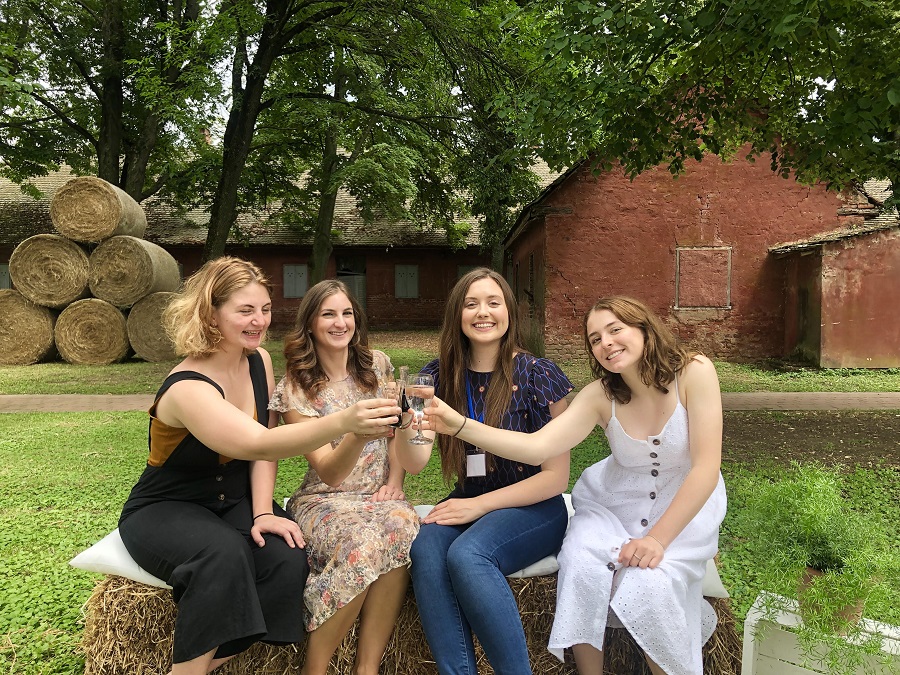
So far, this trip has been truly amazing!
This is my first time in the Slavonian region and it was absolutely breathtaking.
Croatians are known for being hospitable and the warm welcome and hospitality of everyone we have met in Slavonia has been beyond expectation. We are being treated like royalty.
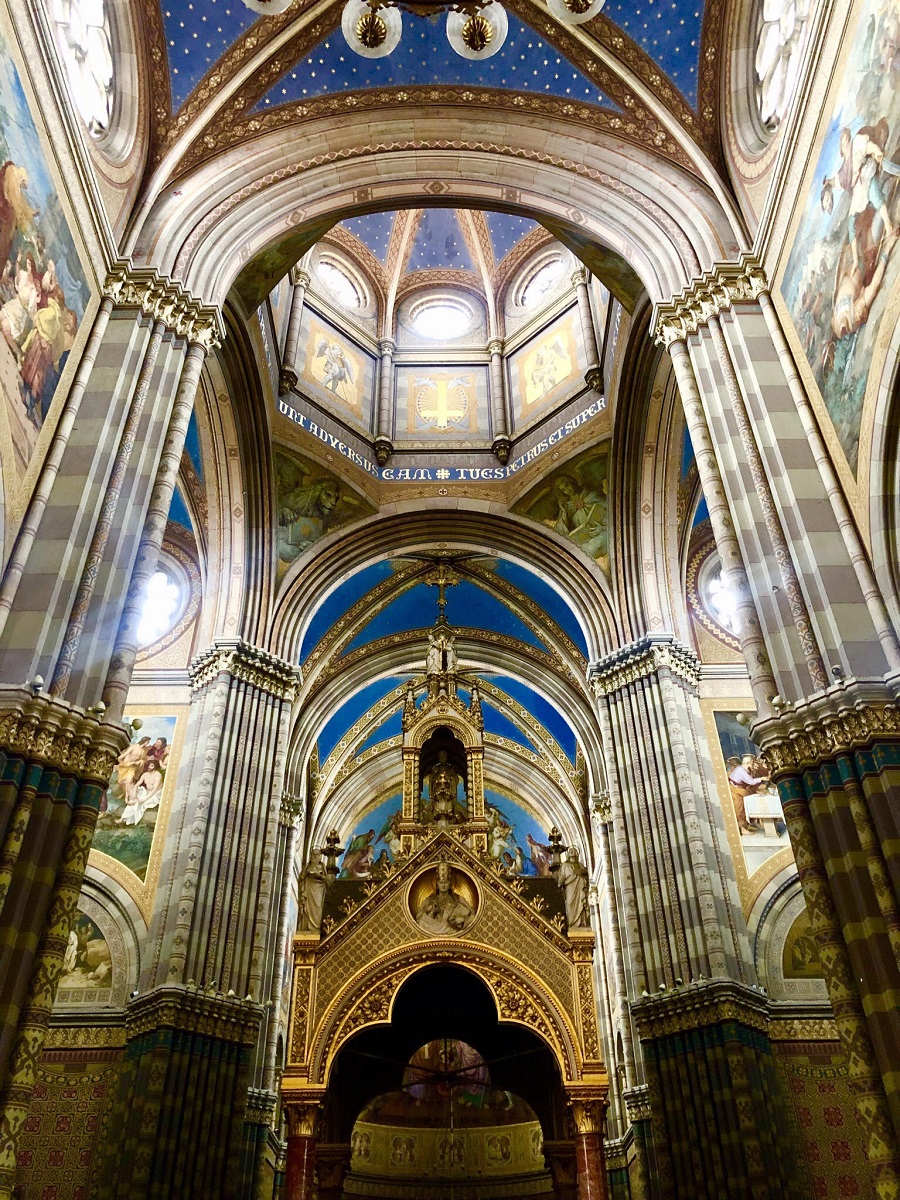
During our 3 day stay our lodging was in the student dorms, each room had bedding for two, small kitchen, and private washroom in the room. Our days are long with a start time of 7:30 am and ongoing until midnight.
Day 3, again did not disappoint we visited the University of Vukovar before making our way to Đakovo.
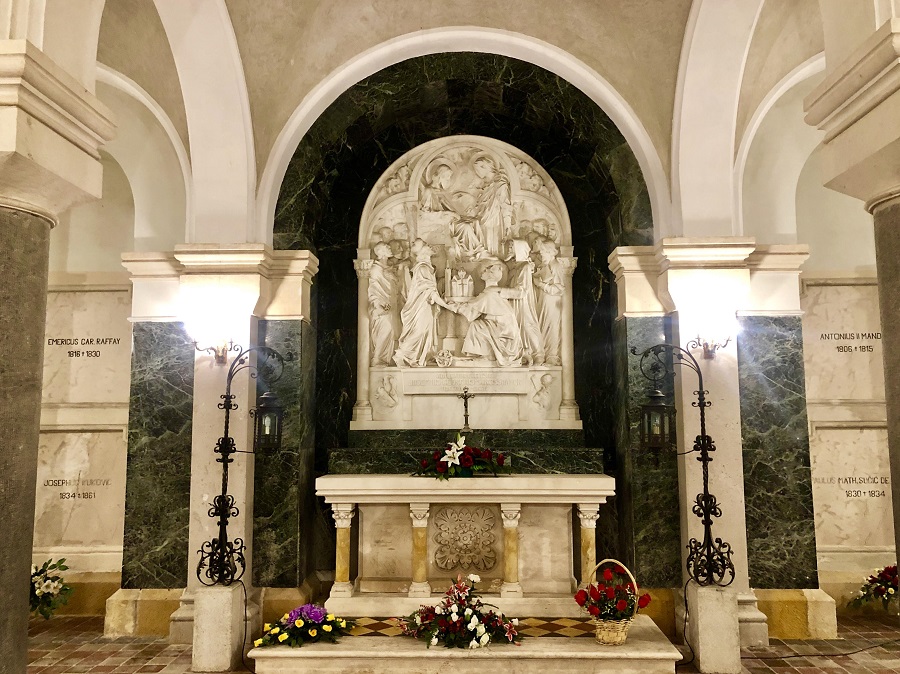
In Đakovo we were greeted by the Mayor Marin Mandarić who joined us in a tour of the cathedral and walked us over to City Hall where we were welcomed with refreshments. The cathedral left us all in awe. The amazing history, character and artwork was magnificent. We were fortunate to have been taken down to the basement to view the tombs, which is not open to the public.
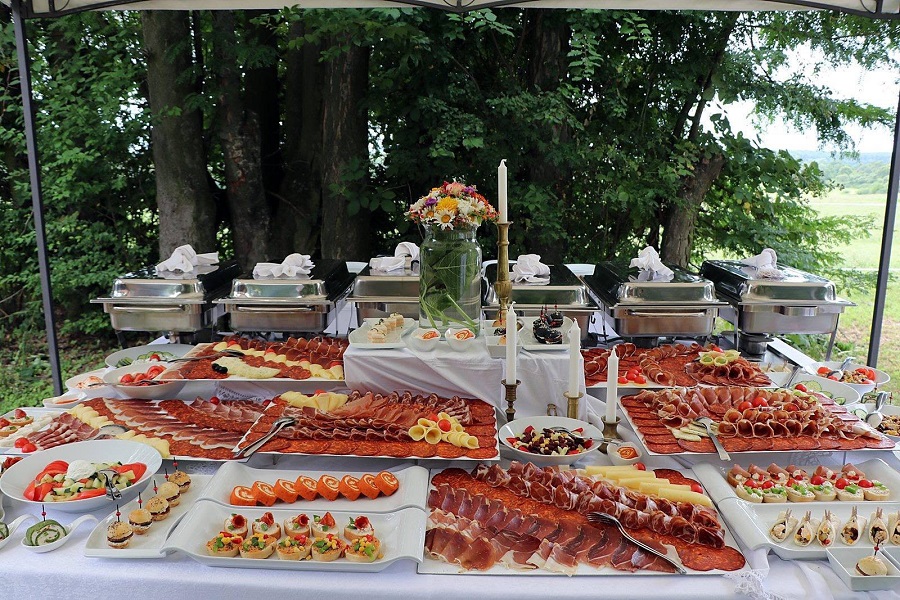
We enjoyed another amazing meal at National Lipizzan Stud Farm Đakovo along with domaći kolači. An amazing venue for weddings and events. Not to mention, the horses were beautiful!
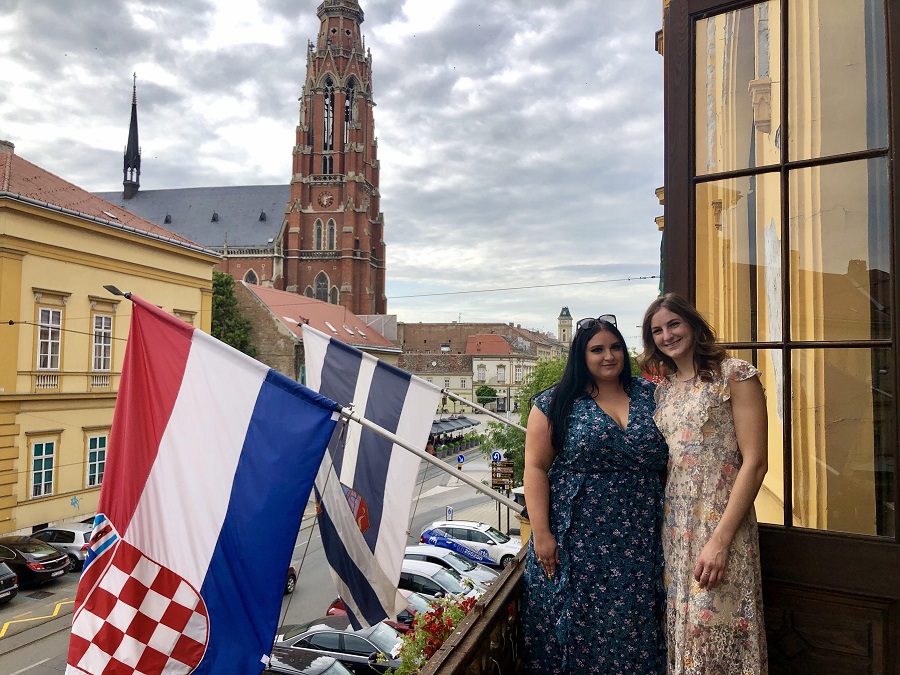
Our day continued to the University of Osijek where our group was divided to smaller groups, to have a private tour of the university and town. So far, it has been really great to have opportunities to speak to locals, giving many of us the opportunity to practice our Croatian and make connections. Our group leaders joined us for a private tour and performance in the Croatian National Theatre in Osijek accompanied with more vino of course!
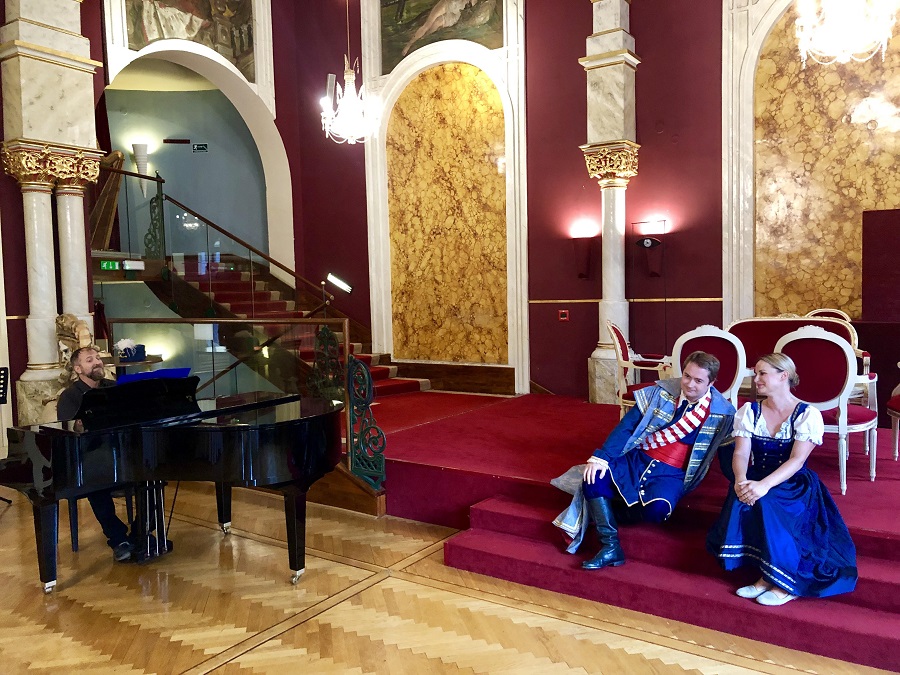
My favourite part of our third day of our trip was our evening dinner. Enjoyed in a beautiful property in Osijek, we were able to savour in our meal with the sounds of Mario Zbiljski playing tamburica joined with a group of musicians playing the cello and small guitars.
Follow #domovina2019 and @kristianabanden @kikibann for more insights.
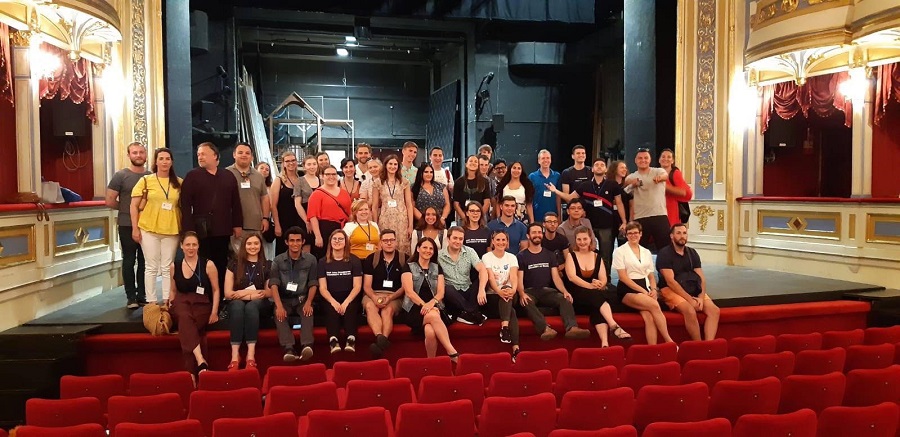
To follow the latest news from the Croatian diaspora, follow the dedicated TCN section.


